




Breast cancer survivor shares how kindness, awareness, and community can change lives in the battle against cancer
By Shaniya Harding
WHILE fiction can invent fascinating worlds, few stories rival real life for strangeness and inspiration. Thirty-three-year-old Orlanzo Raghunandan is one of those living testaments to resilience—and now, he has turned his life into art. His debut book, Tempest: The Truth About the Storm – An Empowerment Journey, chronicles his journey from orphanhood to self-discovery.
Part memoir, part selfhelp guide, Tempest is both raw and redemptive—a reminder that pain can shape one's purpose.
A writer forged by hardship
Born and raised in Mahaica, Orlanzo grew up with an early love for literature. As a child, he spent hours crafting poems and short stories. But at just thirteen, tragedy struck — his mother, his only family and anchor, passed away.
“My mum became a single parent after leaving an abusive relationship,” he said. “When she died, I was left with no father, no mother, no family.”
Left to navigate life alone, Orlanzo found refuge in the kindness of teachers and strangers. “I had a maths teacher who came looking for me when I stopped going
to school,” he recalled. “She said, ‘I see potential in you.’
That moment changed everything for me.”
Despite hardship — periods of homelessness, substance abuse, and despair — he remained grounded by a quiet determination. “I wanted my story to inspire my siblings and others,” he said. “That’s what kept me from giving up.”
The birth of Tempest
More than five years ago, Orlanzo decided to write Tempest. As a young father and entrepreneur, he knew it would be a challenge. “Because of my children, I wanted to show that no matter

your circumstances, if you’re disciplined and determined, you can overcome. That’s what Tempest is about — it’s you versus you.”
Published in 2024, Tempest is divided into two parts: a memoir recounting his turbulent past and a self-help section filled with reflections, exercises, and advice. “I wrote from experience,” he explained. “If I’m talking about depression, what qualifies me to do that? It’s because I’ve lived it.”
A proudly Guyanese creation Orlanzo insists Tempest is not just his story — it’s TURN TO PAGE XVI
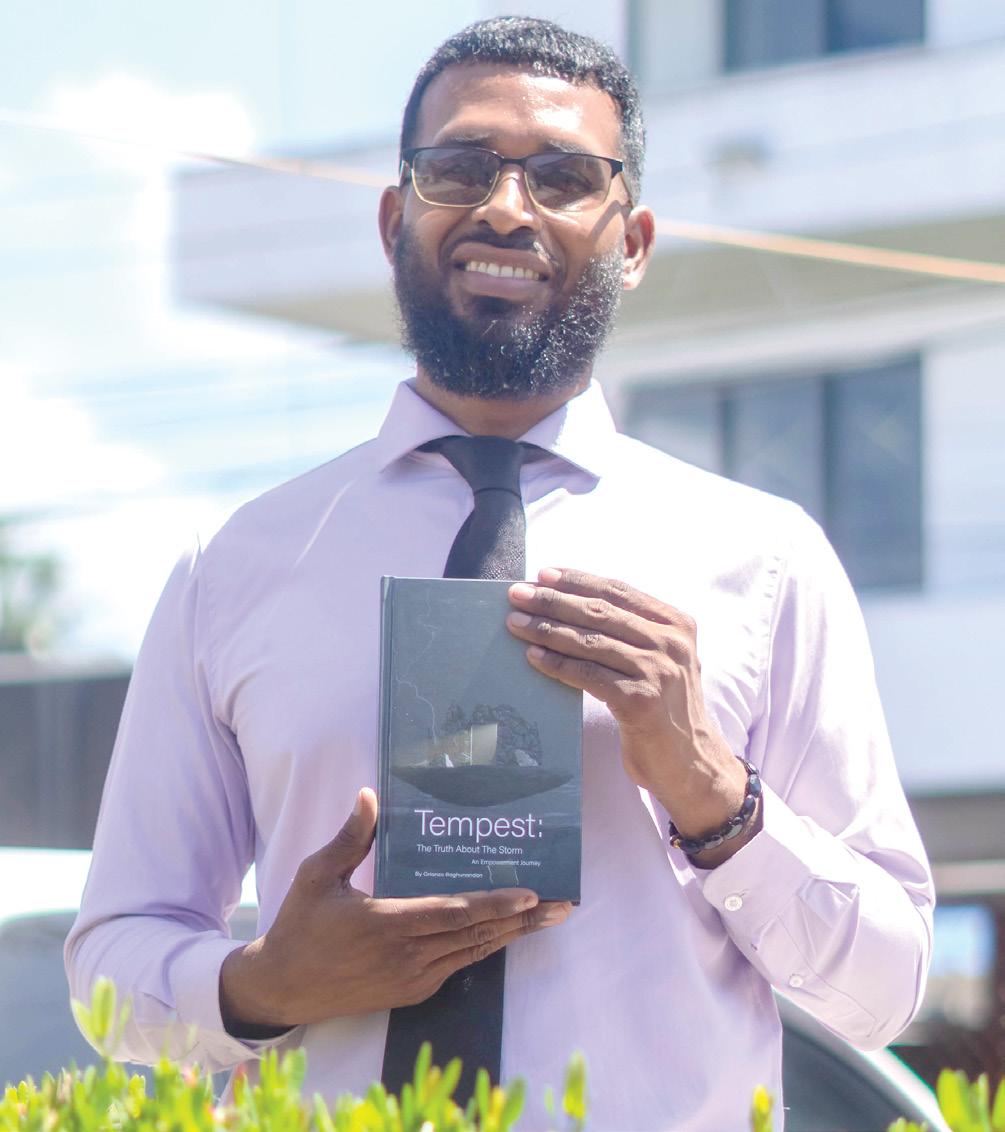

By Shaniya Harding
EVERY year, when October rolls around, companies and communities come to-
gether in support of breast cancer awareness. From International No Bra Day to tree wrappings, walks, and fundraisers, Breast

Cancer Awareness Month, also known as Pinktober, is a season of solidarity. But while many survivors find strength in community, not everyone is so lucky.
When Waheeda Noel was diagnosed with breast cancer in 2018 while living in Trinidad, she was a single mother, far from family, and forced to face one of life’s toughest battles primarily on her own.
Her journey—from fear and isolation to strength and advocacy—is a powerful reminder that no one should ever have to fight cancer alone.
The diagnosis and the road to recovery
Waheeda’s story began with a small lump in her left breast in March 2018. Like many women, she initially dismissed it. “I thought I was too young to have cancer,” she said. However, when the lump persisted after several weeks, a coworker convinced her to undergo a mammogram.
Still hesitant, Waheeda delayed the test, worried about the cost as a single mother who had recently left her job to focus on a small business. “I had no insurance,” she recalled. “I didn’t want to spend that money when my kids were in school.”
When she finally went for the test, the results were alarming. After a mammogram, spot compression, ultrasound, and biopsy, the doctors confirmed her fears—she had breast cancer.
“After the biopsy, it seeded and spread to my lymph nodes within two weeks,” Waheeda said. “It moved from stage one to stage three in a matter of days.”
More than fear for her own life, her thoughts turned immediately to her children. “I didn’t know how to tell them. I’m their only support—we were living in a foreign country with no family and no help. How could I

say, ‘Mom has cancer?’”
Waheeda eventually broke the news to her daughter on the morning of her surgery. “I told her the lump didn’t look good and I had to take it out,” she recalled. That operation marked the beginning of a long, gruelling fight through surgery, chemotherapy, and radiation.
Throughout treatment, Waheeda learned that cancer doesn’t just test the body— it tests relationships. “I’ve never felt so alone,” she said quietly. “Some of my own family members never called to ask how I was coping. I had one friend back in Guyana who would check on me.”
She explained that many people still equate cancer with death, not understanding the mental and emotional toll it takes.
“People don’t realise the trauma, the pain, the fear. They think once you’re alive, you’re fine—but you carry that battle long after.”
Waheeda faced those months without a support system, managing her illness, her business, and her children alone. But through it all, she
clung to one belief: kindness matters. “It costs nothing to be kind,” she said. “If someone in your community has cancer, visit them, take food, talk to them. You never know what that small gesture can mean.”
After a year of chemotherapy, Waheeda’s strength began to return. “After my second chemo, my hair started to fall out,” she said. “I went to the barber and shaved it all off. I didn’t want to see it fall anymore.”
Months later, she experienced a quiet moment of rebirth.
“When I turned 42, I came out of the shower one morning and looked in the mirror. For months, I’d avoided it because I didn’t recognise the woman I saw. But that day, I saw tiny curls growing back. I cried because it meant my body was healing.”
A second chance, a new purpose
After her recovery, Waheeda returned to Guyana. She underwent a hysterectomy and later survived a heart
attack, but she calls herself blessed to be alive—and even more determined to help others.
She found renewed purpose through the Guyana Cancer Foundation, which offered her both financial and emotional support when she needed it most.
Seven years after her diagnosis, Waheeda is now cancer-free and proudly holds the title of 2025 Global Hero of Hope for breast cancer survivors.
She uses her platform to promote awareness and early testing, especially among young women.
“Awareness saves lives,” she said firmly. “When I found my lump, it was stage one. Within two weeks, it became stage three. If I had ignored it any longer, I wouldn’t be here today.”
Waheeda believes that sharing survivor stories helps others find the courage they need. “That’s why we tell our stories,” she said. “If even one person hears mine and decides to get checked early, then it’s worth it.”
Her message is simple but powerful: be kind, be aware, and never face the fight alone.
giving Guyanese poets the stage — and respect — they deserve
By Shaniya Harding
FROM authors to playwrights, Guyana’s creative scene is alive with energy. Now, poets are stepping into the spotlight, thanks to a new collaboration between GT Gimmicks and Nightlife592. The partnership recently launched the first Poetry Slam: Spoken Word event — an initiative that’s reigniting appreciation for performance poetry and giving local poets a platform to shine.
Bringing poetry back to the stage
Actor and entertainer Mark Kazim, one of the minds behind the event, says the idea has been years in the making. Known more for his acting than poetry, Kazim explained that his love for spoken word started long ago. “Years ago, I used to go to poetry nights at Upscale Guyana Restaurant,” he recalled. “That event eventually ended, but it always stuck with me.” That passion eventually led him to launch his own poetry platform, Word Spoken, where he featured and filmed local poets. “I always felt poetry needed to be heard,” he said. “Guyanese people don’t realise how special our poets are.”
When he discovered
Nightlife592’s interest in hosting poetry events, everything aligned. “I reached out to them after seeing a flyer for a poetry slam,” Kazim said. “They wanted to start something but didn’t know any poets or how to structure it — so when we met, it was meant to be.” Together with Hadassah Headley and Omar Edghill of Nightlife592, the team organised and hosted the event in just three weeks.
The first Poetry Slam brought together some of the country’s most talented performers, including Mark Luke-Edwards, Latiefa Agard, and Mishael Henry. The venue was packed, with a sold-out crowd responding with cheers, tears, and laughter throughout the night.
“It was a major success,” Kazim said. “People are starved for entertainment that makes them feel something. It’s not a party — it’s emotional, it’s thoughtful, it’s real. You go through every emotion with the poets.”
The team’s goal is to make the show a monthly feature. “We wanted to do it once a month, but after the response, we’re even more excited,” Kazim said. “People are already asking about tickets for the next one.”
The second Poetry Slam
is set for October 26 at Searoc Sky Lounge, and according to Kazim, it will be even bigger and better. “We’re fixing the few hiccups from the first show,” he explained. “This one’s going to be hotter than the first.”
For Kazim, Poetry Slam Guyana is more than a stage — it’s the start of a movement. “This event is about promoting Guyanese poetry and spoken word, but also
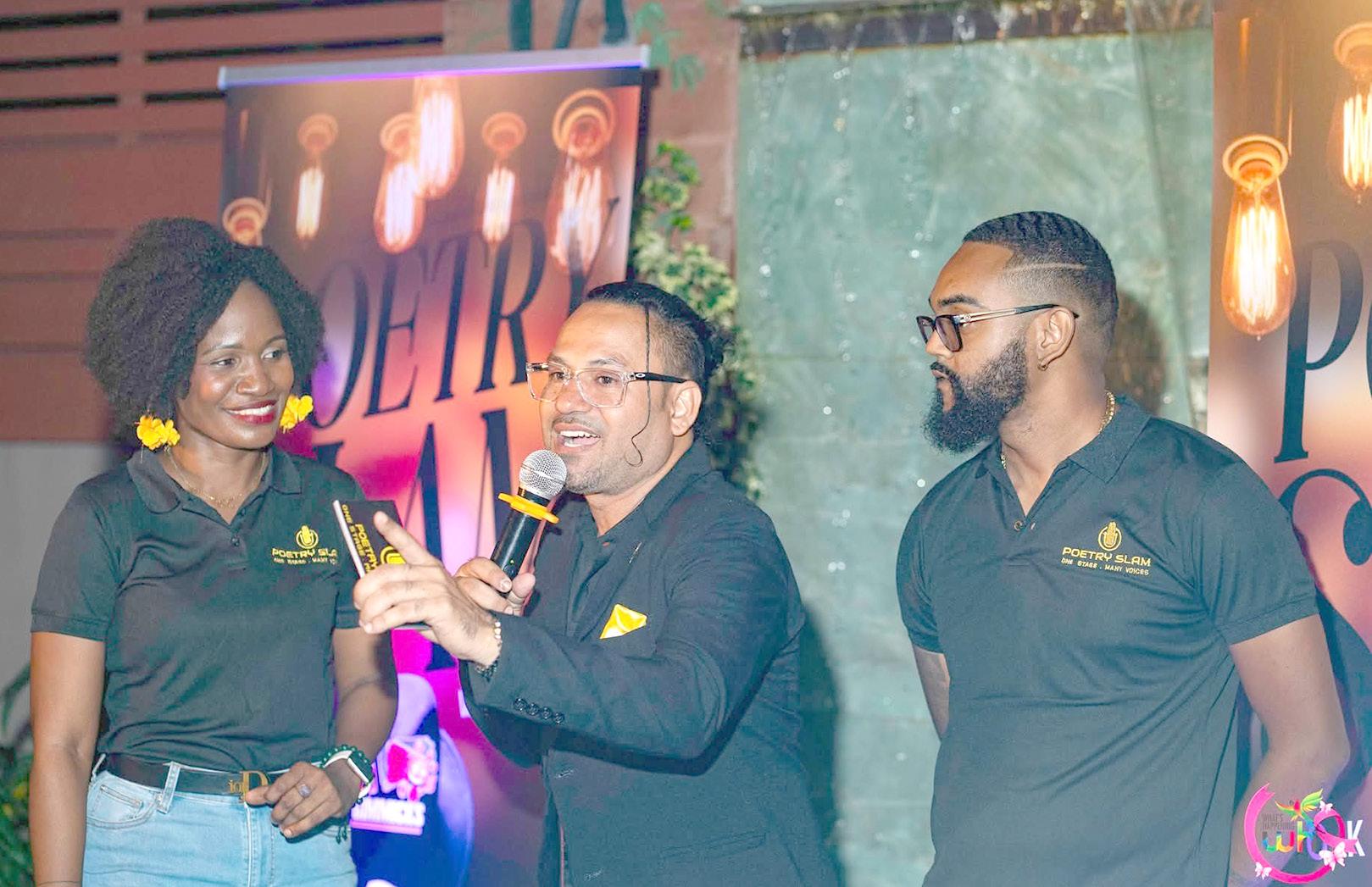


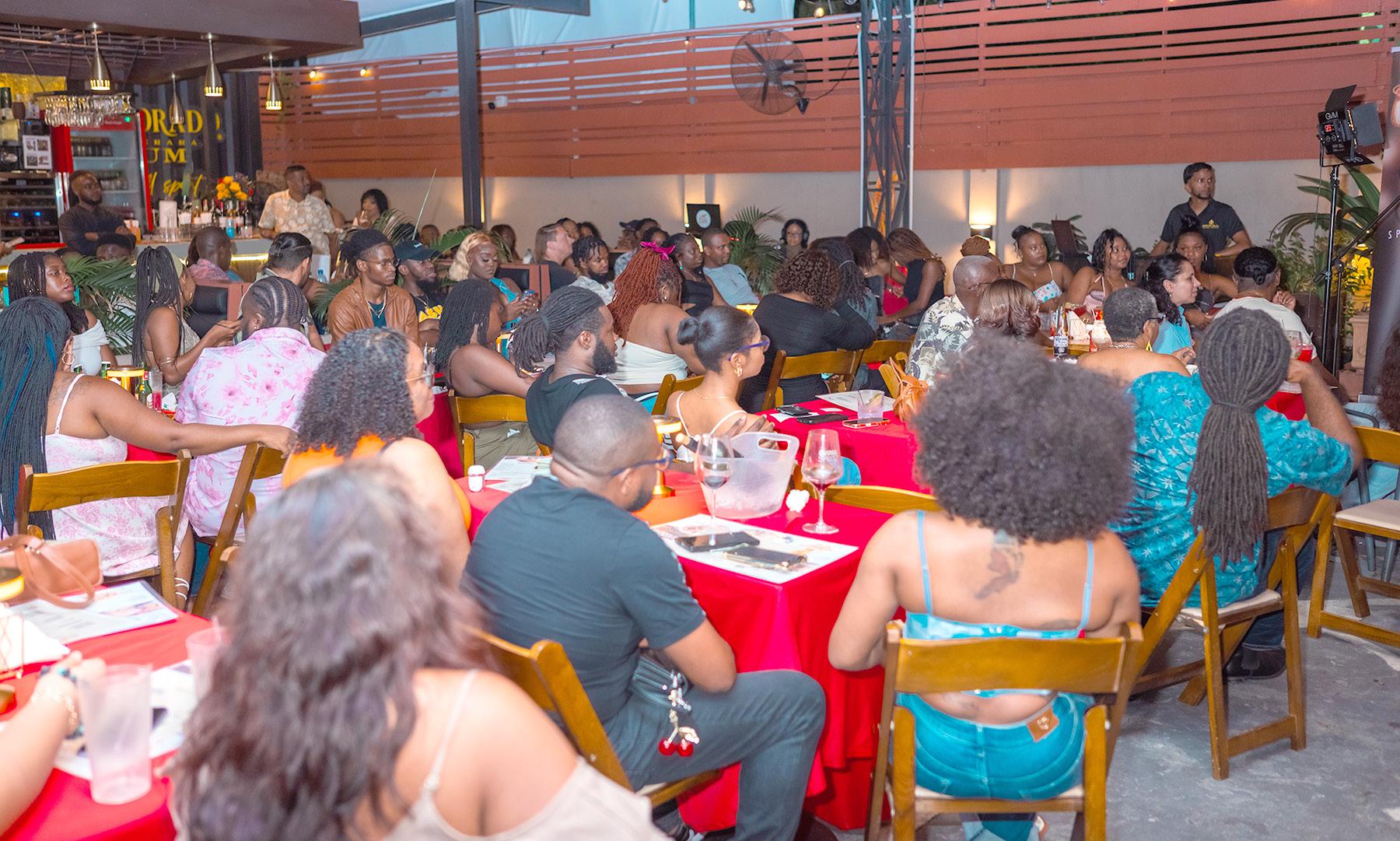
about promoting local talent overall,” he said. “The main act is poetry, but we also feature original musicians.
It’s not karaoke. We want people who create — writers, singers, thinkers.”
Each month, one performer is crowned Poet of the Night by audience vote, and the winners will eventually compete in a Grand Slam featuring all the top performers.
“By then, we’ll have built the brand and helped these poets become marketable,” he said.
“The goal is to make poetry exciting again — something people follow and support.”
Fair pay and real recognition
A key part of the event’s vision is fairness. Every featured poet is paid for their performance, regardless of whether they win. “If we feature twelve poets, all twelve get paid and receive a small
gift,” Kazim said. “The first Poet of the Night was Latiefa Agard.” He added that several sponsors have already joined in after seeing the first show’s impact. “People loved it so much that they wanted to be part of it. Some attendees have even come forward to sponsor future events.” Kazim believes this shift — paying poets and creating consistent opportunities — could transform the arts scene. “Too often, Guyanese performers don’t support each other,” he said. “We want to change that. This event is about mentorship, collaboration, and respect. We’re not creating competition; we’re creating community.” As the Poetry Slam movement grows, one thing is certain: spoken word is reclaiming its place as a force for connection, creativity, and cultural pride
By Michel Outridge
YVONNE Morris of Golden Grove, West Coast Berbice, stands as a symbol of resilience, humility, and determination within Guyana’s growing livestock industry. Affectionately known among her peers as the “cow girl,” she has dedicated more than two decades to livestock farming, nurturing a flourishing enterprise of 50 sheep and 45 goats.
Born into a proud farming family, Morris grew up immersed in agriculture, learning the art of animal husbandry from her father, a seasoned cattle farmer with more than 40 cows.
That early exposure instilled in her a deep respect for farming and a determination to build her own legacy.
“Working for others never sat well with me,” she reflected. “I wanted to be independent and create something of my own that could support my family and community.”
Over the years, Morris has become a gentle giant in the West Berbice farming community—an industrious and thoughtful farmer who combines traditional wisdom with modern livestock management.
Her partnership with the Guyana Livestock Development Authority (GLDA) has
been pivotal to her success.
When she received two high-quality breeding rams from the Authority, it marked a turning point in her enterprise, allowing her to improve her flock’s genetic line and productivity.
Today, her farm includes a modern elevated pen system designed to meet national sanitation and animal welfare standards.
She is now focused on developing her own pasture into a fattening lot, designed to enhance weight gain and market readiness among her animals.
Although transportation to Georgetown for bulk feed purchases remains a challenge, Morris is hopeful. She welcomes the government’s ongoing support to help farmers increase profitability, particularly the recent removal of taxes on vehicles and other inputs critical to agricultural production.
“This initiative gives farmers like me real hope,” she said warmly. “Transportation accounts for a significant portion of my operational costs. I plan to apply for support to purchase my own vehicle so I can redirect those funds to expanding other areas of my farm.” She added that once approved, this investment would not only lower her long-term expenses but also increase her efficiency and independence.
Morris is equally optimistic about the planned Agricultural Development Bank, which the government has announced to improve access to financing for farmers.
“It’s often difficult for small farmers like me to meet the lengthy requirements of traditional banking systems,” she noted. “An agri-development bank will give us the confidence and opportunity to grow our businesses and strengthen the sector.”
A dedicated member of the West Berbice Sheep and Goat Association—which has more than 60 active members—Morris is deeply proud of the organisation’s role in advancing the small ruminant industry.
“We share our knowledge, challenges, and experiences,” she said. “It’s about collaboration and collective growth.”
Looking ahead to the upcoming Ruminant Expo and Competition, organised by the Ministry of Agriculture through GLDA and set for today, (Sunday, October 12, 2025), at the Rising Sun Turf Club, Morris exudes both excitement and confidence. Her animals, carefully groomed and well-fed, are ready to represent Region Five. “I believe they’re among the best,” she said with a smile. “They’ve been
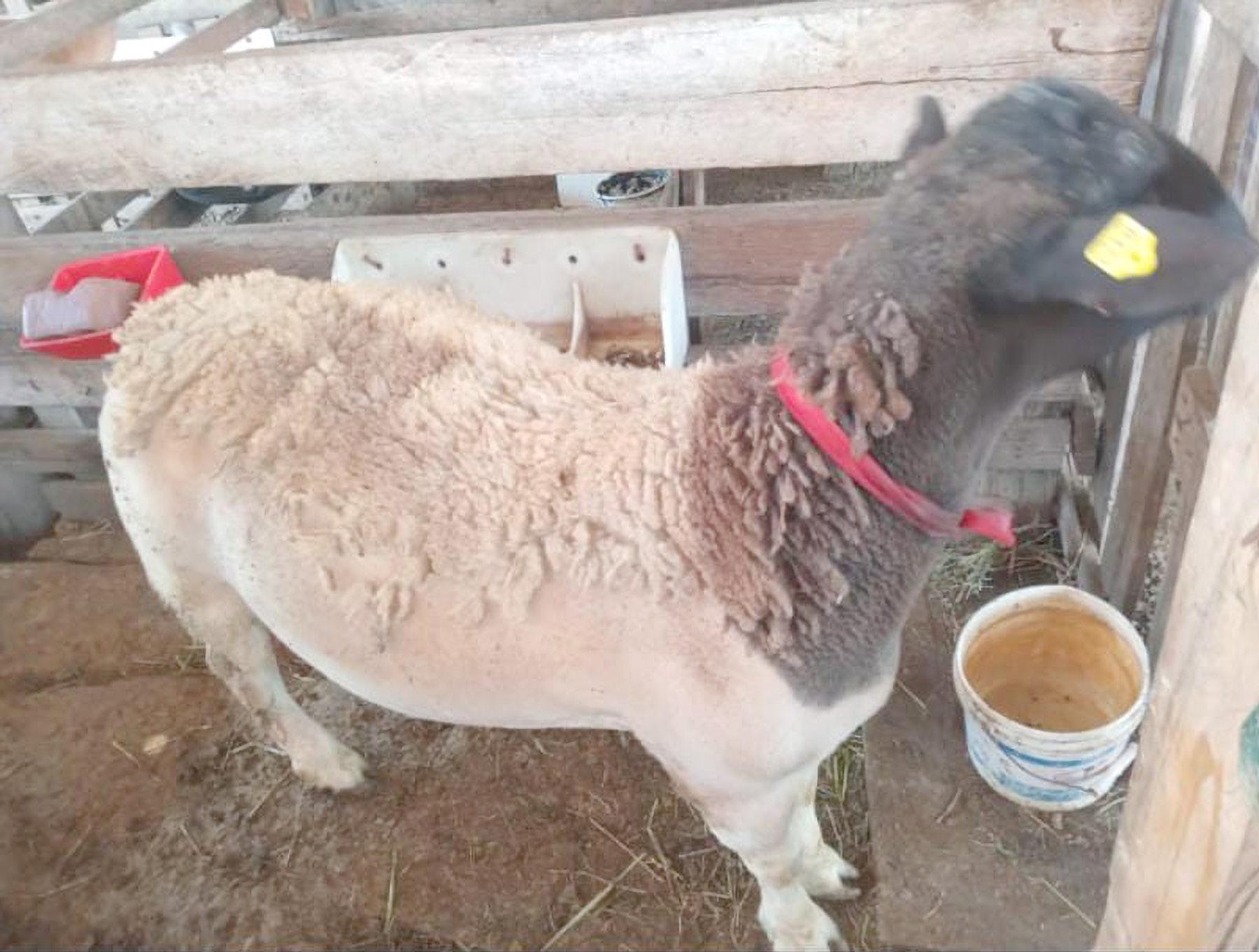
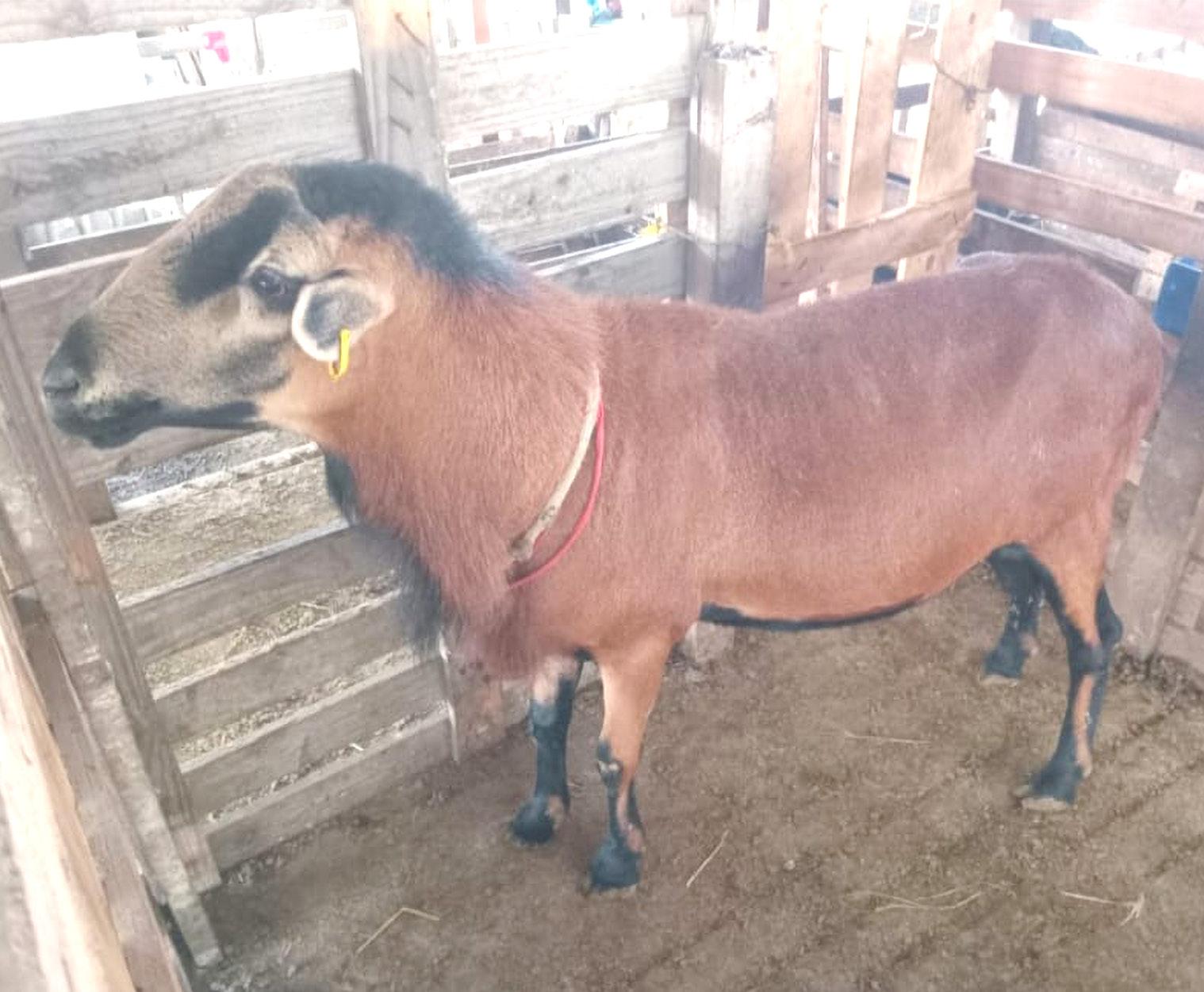
raised with care and managed according to all GLDA guidelines.”
Her enthusiasm also extends to the Fireside Curry Challenge, a highlight of the Expo’s cultural programme. With a twinkle in her eye, she revealed that she has a “secret recipe” she’s certain will help her win. “It’s something special that has been in my family for years,” she teased. Morris welcomes the Expo’s focus on food safety and traceability, recognising their importance in ensuring consumer confidence and public health.
“Food safety begins on the farm,” she stated firmly. “I’m very conscious of my responsibility to provide safe, quality food for our nation. I strictly follow GLDA’s production guidelines and practise minimal medication use because healthy animals mean healthy people.”
She also praised the introduction of new livestock breeds, particularly the Barbados Black Belly and Dorper, noting that crossbreeding between the two produces superior offspring.
“When you cross the Barbados Black Belly with the Dorper, the result is an animal that’s prolific, hardy, and ideal for meat production,” she explained. “They grow faster, adapt better, and yield more efficiently—exactly what we need in this changing climate.”
Cognisant of the challenges posed by climate change, Morris emphasised the importance of modernisation in agriculture. “Farmers must adapt,” she asserted. “We need to embrace technology, improved genetics, and modern production systems to remain competitive. I’m glad to see the Ministry of Agriculture and agencies like GLDA leading this transformation—it’s exactly what the sector needs.”
Morris also expressed deep gratitude to the GLDA for their continued support, especially to Chief Executive Officer, Dr Dwight Walrond and the dedicated extension team in Region Five. Their encouragement, she said, has helped her and many others build stronger, more resilient farms. “I am always thankful for the
chance to share my traditional knowledge,” she reflected. “When we combine that with modern technology, we can truly transform livestock farming in Guyana.”
Passionate about the future of the industry, Morris is also a vocal advocate for the involvement of women and youth in livestock production.
“I want to see more young people and women enter this field,” she said. “It’s not only a lucrative enterprise—it gives you independence and immense pride knowing you’re contributing to the nation’s food security.”
As the Ruminant Expo and Competition approaches, Yvonne Morris remains a shining example of what determination, knowledge, and community spirit can achieve. Her story is one of balance— between heritage and innovation, between passion and perseverance—and stands as an inspiring reminder that the heart of Guyana’s agricultural future beats strongest in the hands of its farmers.

By Michel Outridge
AFTER serving in the Guyana Police Force (GPF) during one of the nation’s most turbulent periods, former police officer, Ramdath Baichoo, made a life-changing decision—one that would reconnect him with his heritage and sustain his family.
More than a decade ago, amid the challenges of the crime wave, Baichoo left the Force and turned full-time to small ruminant farming, a vocation that has since become both his livelihood and passion.
Today, the resident of Number 37 Village, West Coast Berbice, is a respected livestock farmer and Executive Member of the West Berbice Goat and Sheep Association, playing an active role in supporting fellow farmers and promoting improved animal husbandry across the region.
With over thirty years of experience, Baichoo currently manages a flock of thirty-eight Barbados Black Belly sheep and a herd of more
than eighty Nubian goats, all of which are bred primarily for genetic improvement and sustainable production.
His entries for this year’s GLDA ruminant competition include his prized “stud” Barbados Black Belly ram and a Nubian billy goat—both animals that have secured him the top regional prize three times in past competitions.
Confident in his chances, Baichoo remarked that while winning is an honour, his true motivation lies in demonstrating what is achievable through dedication, proper nutrition, and excellent animal care. “It’s not just about the trophy,” he said. “It’s about showing what can be done when you truly invest in your animals.”
From law enforcement to livestock Baichoo’s journey into farming was deeply rooted in his upbringing. Born into a family of farmers, he spent his childhood living with his grandparents, who reared animals long before he was born.
It was there, as a boy, that
he learned the intricacies of caring for livestock.
“After school, I would help round up the animals, especially when they went into trenches or drains. I was always the one who had to go after them and lead them home after grazing in the open spaces in the backdam,” he recalled with a smile.
He vividly remembers the evenings spent wading through the thick green mass of the trenches, which often caused his skin to itch, prompting him to rush home for a much-needed bath and apply homemade coconut oil for relief.
As a child, Baichoo’s grandparents gifted him a single sheep—an act that would eventually define his future. From that one animal, his flock gradually multiplied over the years, shaping the path he would later follow as a professional livestock farmer.
Before becoming a fulltime farmer, Baichoo briefly dabbled in the fishing industry. During his years as a police officer stationed at Cane Grove, East Coast Demerara,
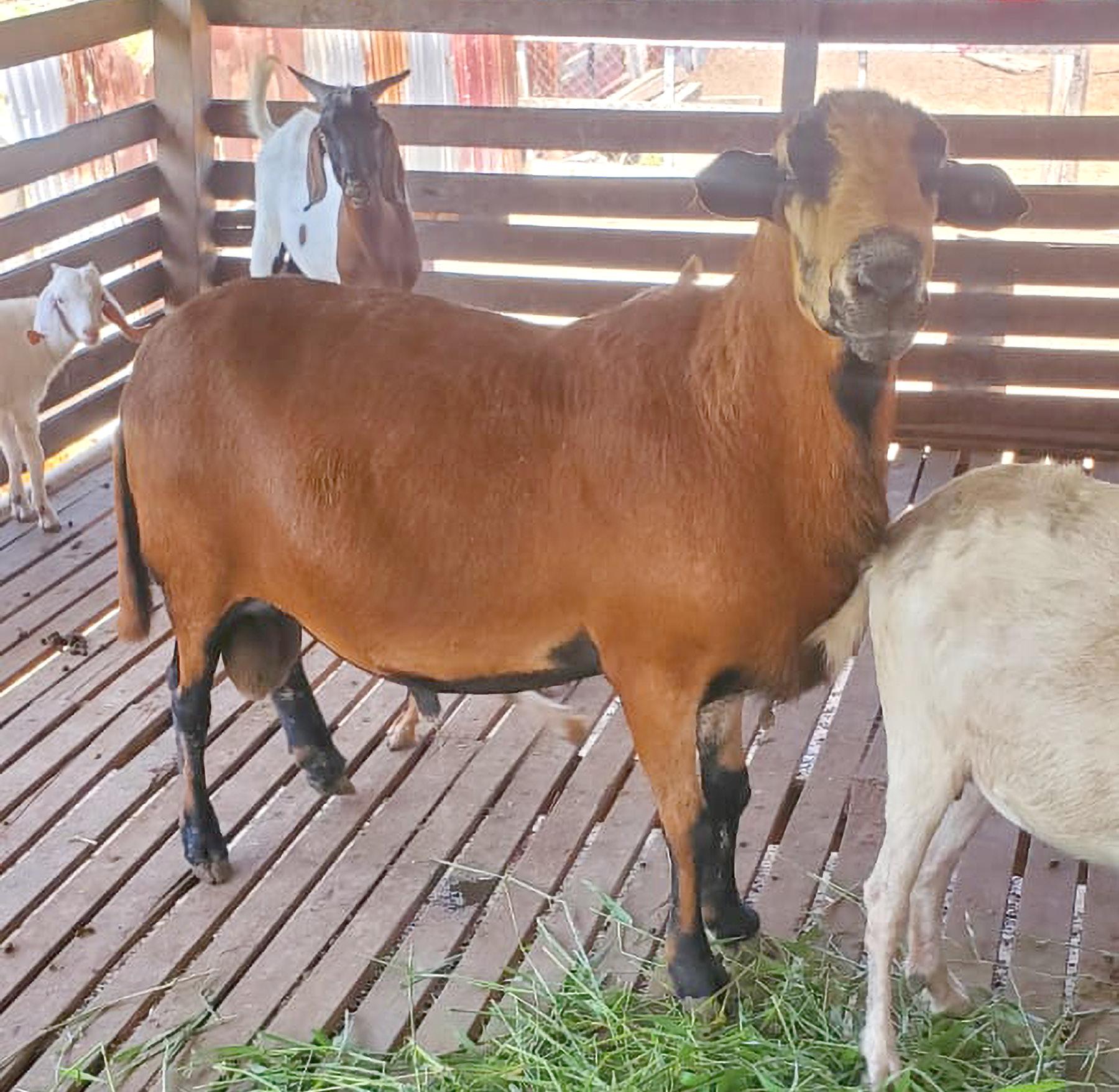
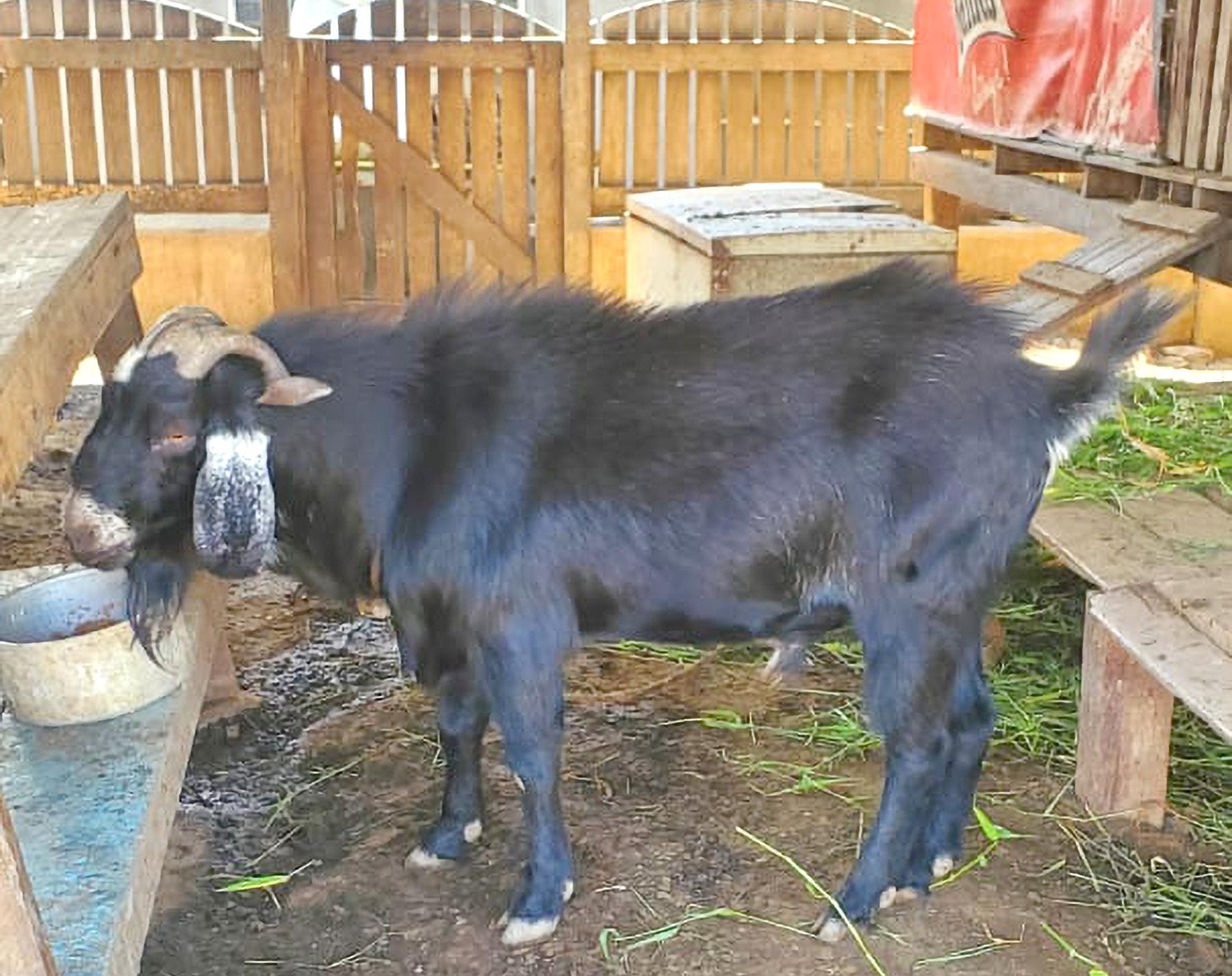
he met and married his wife, a local of that village.
Together, they later moved back to his home village of Number 37, West Coast Berbice, where he established his farm and began rearing goats and sheep as a full-time income earner.

Government support strengthening the industry
A significant turning point came two years ago when Baichoo received a Barbados Black Belly ram through the Government of Guyana’s Genetic Improvement Programme, spearheaded by the Guyana Livestock Development Authority (GLDA) under the Ministry of Agriculture.
The initiative aims to enhance the national small ruminant stock by distributing genetically superior breeding animals.
For Baichoo, this intervention transformed his operation. “Since the introduction of the Barbados Black Belly ram, my flock has become stronger, healthier, and more productive,” he explained. “The offspring have excellent qualities, and I’ve seen significant improvement in both size and resilience.”
He praised the government’s ongoing commitment to the livestock sector, noting
that such programmes have created sustainable livelihoods for rural families like his. “Farming is more than just employment—it’s a way of life,” Baichoo said proudly.
Recognising the increasing impact of climate change on livestock production, Baichoo decided to implement an elevated pen system—a climate-smart initiative developed by the GLDA. The materials for the construction were donated, allowing Baichoo to build the structure efficiently.
He explained that before adopting the elevated system, he used a flat-floor pen, which often became waterlogged during the rainy season. “It was difficult to maintain a clean, dry, and comfortable space for my animals,” he said. “But with the new elevated pen, the difference is tremendous.”
The elevated design allows for better drainage, improved ventilation, and enhanced hygiene, ensuring the animals remain dry and healthy throughout the year. Waste matter falls through the slatted floor, making cleaning easier and minimising disease risks.
“Now I can rest peacefully at night knowing my animals are comfortable,” he added with satisfaction.
The adoption of this climate-resilient infrastructure underscores Baichoo’s commitment to sustainable livestock production and aligns with the national drive toward modern, adaptive farming systems.
A philosophy rooted in nutrition and genetics
Baichoo firmly believes that animal nutrition and genetics are the twin pillars of successful livestock production. “The quality of what we feed our animals and their genetic makeup determine their health and productivity,” he explained.
He allows his flock to graze near the mangrove forest by the seaside, where the naturally salty grass enhances weight gain and helps prevent internal parasites. “I believe one of the reasons my animals require little or no medication is because of the quality of grass and soil in my pasture,” he added.
His animals are primarily grass-fed, supplemented with locally purchased feed and vitamin mixes. This balanced approach yields strong, healthy animals that perform TURN TO PAGE XVII
By Michel Outridge
WHEN Vidyawatie “Molly” Balram speaks about her animals, her face glows with enthusiasm. The 37-year-old small ruminant farmer of Number 37 Village, West Coast Berbice, is eagerly preparing to make her debut at the Guyana Livestock Development Authority’s (GLDA) Ruminant Expo and Competition, set for today (Sunday, October 12, 2025), at the Rising Sun Turf Club, Weldaad.
Her entry—a striking young black buck named “Jimmy”—is the pride of her farm. With guidance from GLDA Livestock Extension Officer Ms Carmelita Fleming and Veterinarian Dr Joel Dilchand, Molly has been meticulously grooming Jimmy for the competition—bathing him regularly, trimming his hooves, and ensuring his diet maintains an ideal body condition.
“This is my first time participating, and I’m so excited,” she said with a bright smile. “Jimmy is a handsome goat with a shiny coat and strong features. I believe he
has what it takes to win.”
A journey that began with Daisy Molly’s love for livestock started quite unexpectedly in 2000, when a friend gifted her a baby goat. She affectionately named it Daisy—and from that single act of kindness, an enduring passion for animal rearing was born.
“Daisy was spoiled,” she laughed. “She drank Coca-Cola from a red cup and followed me everywhere. That’s how my love for goats started.”
Over the years, Daisy became more than just a pet— she became the matriarch of Molly’s herd. Remarkably, throughout her reproductive years, Daisy birthed only female kids, ensuring the steady growth of Molly’s flock.
Today, Daisy is still alive, though retired from breeding, and remains a cherished member of the farm—symbolising the beginning of Molly’s journey. “Every goat on my farm traces back to Daisy,” she said proudly. “She’s the mother of them all.”

From one spoiled pet, Molly’s herd has grown to over 100 goats and 20 sheep, making her one of the most promising small ruminant farmers in Jacoba Village. Her herd consists mainly of Nubians—known for their excellent meat and milk qualities.
Although livestock rearing is not her family’s main source of income, it provides an excellent supplemental livelihood alongside their small rental business and backyard cash-crop cultivation. Her husband manages the crops while Molly focuses on the animals, assisted by their young son.
A modern farm rooted in innovation Molly attributes much of her success to the continuous guidance and technical support of the GLDA. Through the agency’s extension services, she has learned to formulate balanced animal feeds using local ingredients, administer basic veterinary care, and design proper housing for her animals. Her elevated goat pen,
constructed with GLDA’s advice, is a model of climate-smart livestock infrastructure—protecting the animals from flooding while providing comfort and ventilation. She has also adopted molasses-urea blocks and other supplemental feeding methods to combat the effects of dry spells caused by climate change.
“The GLDA has helped me tremendously,” she said. “Their officers are always available to give advice, check the animals, and teach us new techniques. Because of them, I’ve been able to raise healthy, strong animals.”
She credits her animals’ excellent body weight and coat quality to a careful focus on nutrition and hopes to further improve her herd by accessing a pedigree Boer buck through government breeding programmes. Molly also advocates for a Buck Rotation Programme, similar to the GLDA’s successful Bull Rotation Programme, to ensure small ruminant farmers in Region Five have access to superior genetics and sustainable breeding practices.
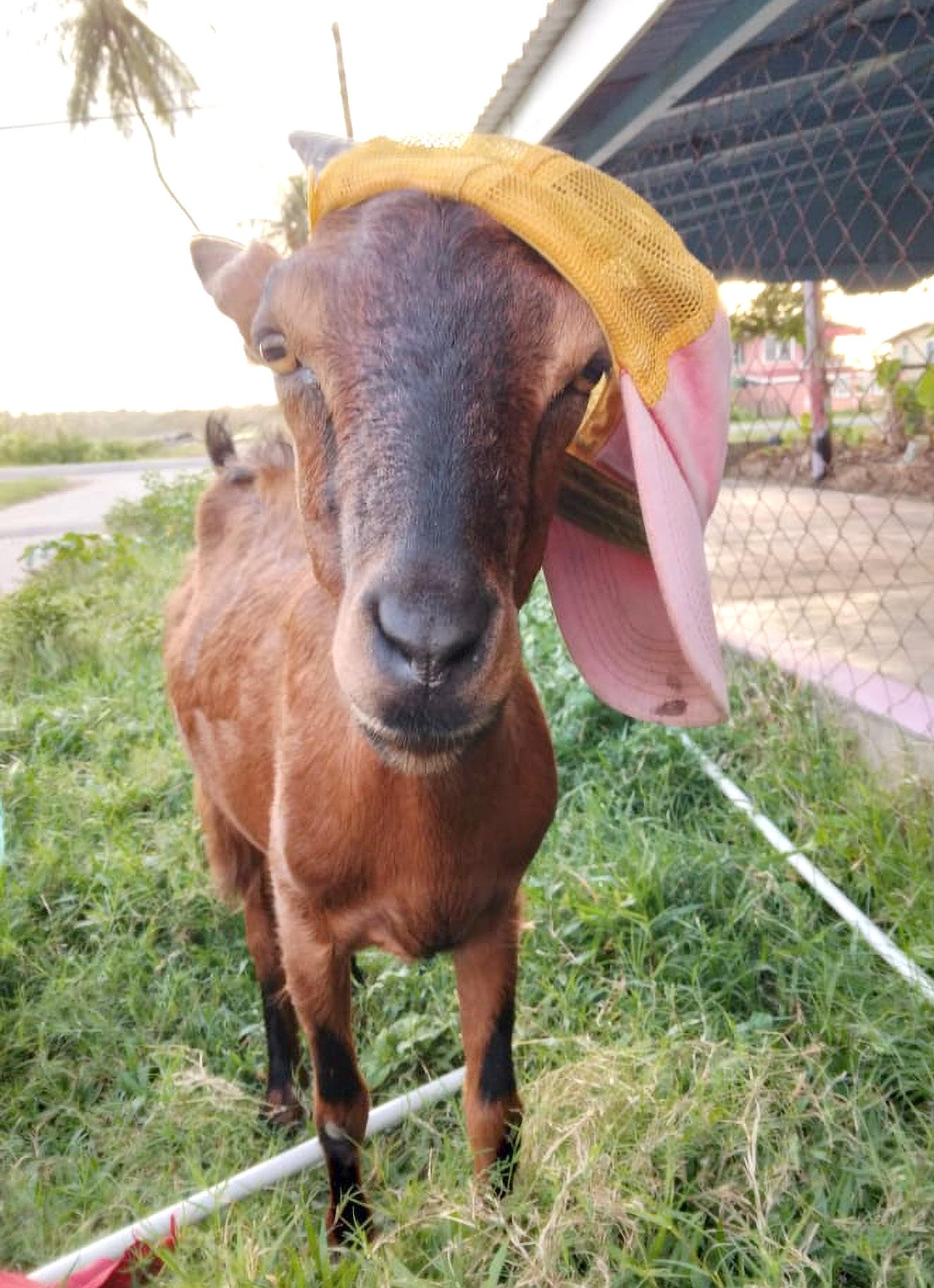

Region Five: Guyana’s livestock capital
Molly’s story unfolds against the backdrop of Region Five’s transformation into the livestock capital of Guyana—and increasingly, the Caribbean. The Government of Guyana, under President Dr. Irfaan Ali, continues to inject vital resources into the sector, focusing on improved genetics, modern husbandry techniques, and the development of resilient, climate-smart systems that empower rural farmers.
Molly’s enthusiasm extends beyond her own achievements. As a new and thriving farmer, she encourages more women and young people to consider livestock farming as a rewarding source of income and a path to self-reliance.
“You don’t need to know everything to start,” she said.
“Once you have the interest, the GLDA team—led by Dr. Joel Dilchand—will provide the training, guidance, and ambulatory services to help you succeed. It’s a good business, and it’s something to be
proud of.”
Love beyond livelihood
For Molly, farming is as emotional as it is practical. Each goat has a name, and she knows them all by heart. “If one of my goats doesn’t come home at night, I can’t sleep,” she admitted. “I go out and call until I find it. These animals are part of my family.”
As she prepares for the Ruminant Expo, Molly is filled with anticipation—not only for the possibility of winning a prize, but for the chance to showcase how far she has come from that first pet goat, Daisy.
“I never imagined that one goat could change my life,” she said. “Now, I look around and see how much we’ve grown. Daisy started it all—and Jimmy is carrying the dream forward.”
Vidyawatie “Molly” Balram is proud that Region Five’s reputation as Guyana’s livestock capital continues to shine—built on foundations of passion, perseverance, and a deep love for the animals that sustain both livelihoods and legacies.
By Chevon Lim
AS the late afternoon light washed Georgetown in a radiant glow, the pavement bordering Parliament Building stirred with quiet anticipation. Strangers clustered together—some laughing, others hushed and thoughtful—united by a shared curiosity about the journey that awaited them. Each carried their own expectation of the evening ahead: some sought adventure, while others simply craved a front-row seat to history.
On the historic evening of October 5, Guyanese of all walks of life were invited to join His Excellency, President Dr. Irfaan Ali and other dignitaries in a symbolic walk across the newly inaugurated Bharrat Jagdeo Demerara River Bridge, heralding a bold new era of infrastructural transformation for the nation.
While the celebrations unfolded on land, enterprising tour operators offered a truly unforgettable perspective: from the river itself. Guests aboard the Sunset and Evening Boat Tour, facilitated by Trail Masters Adventure Tours, were offered front-row seats to history—gliding along calm Demerara waters, framed by the fiery glow of sunset and a spectacular fireworks display that illuminated the night sky.
The check-in unfolded with a gentle hum of excitement. Coloured bands,
slipped around wrists, marked the vessels to which each guest belonged. With bands gleaming under the fading sun, the passengers made their way toward the Stabroek Stelling—where the city’s beat met the pulse of the river.
Boarding was unhurried, almost ceremonial. The water lapped softly against the wooden posts, as if inviting everyone to slow down and take notice. And notice they did. From the deck, the Stelling rose, a living monument—its weathered timbers and old clock tower holding stories of merchants, sailors, and time itself. Just beyond, colossal vessels used in the oil and gas sector stretched skyward, their towering frames reflecting the slowly approaching golden-pink wash of dusk. It was an image of contrasts: history nestled against the steel sinews


of modern industry.
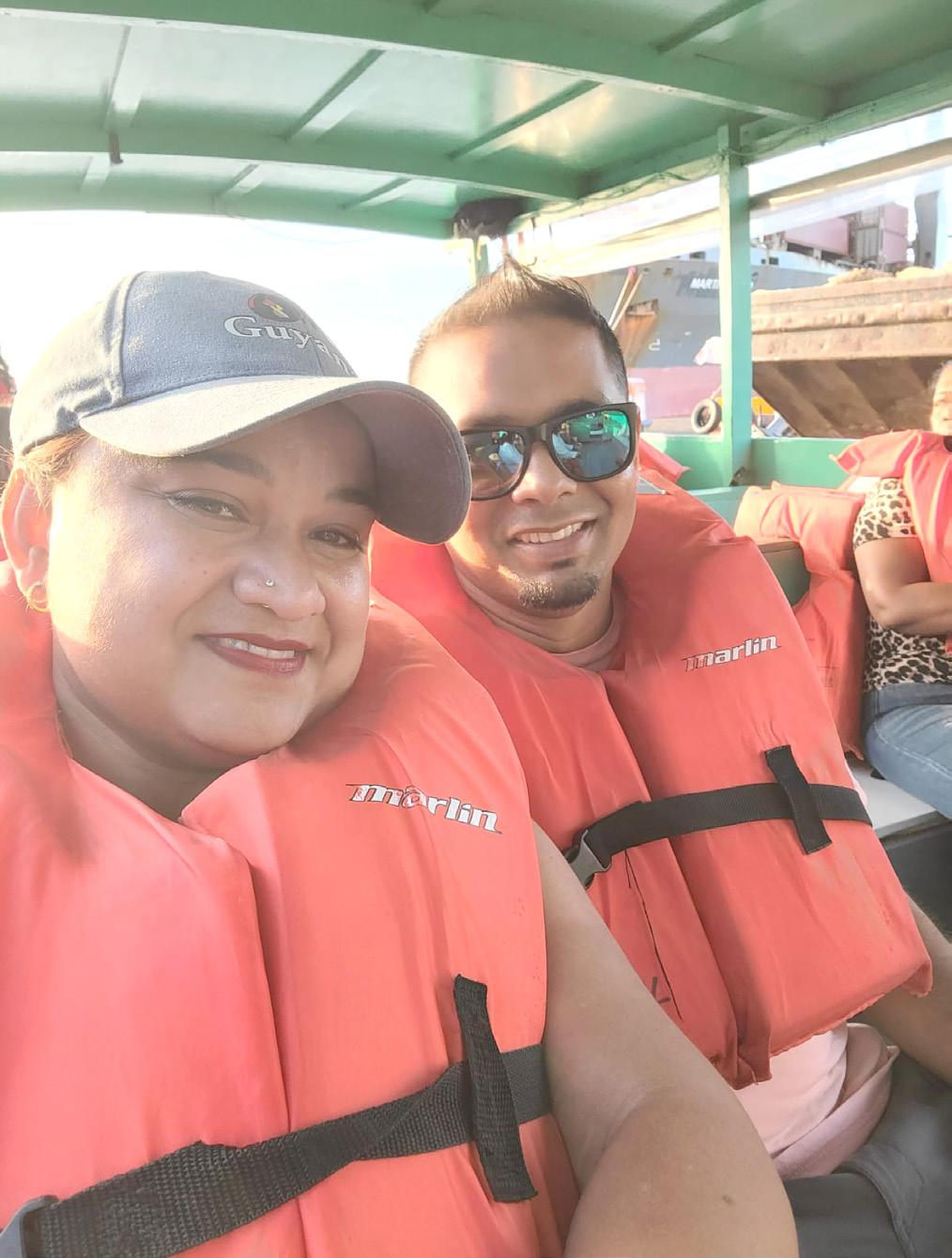
And then, there it was— the quiet silhouette of the power ship, steady and commanding, anchored like a silent guardian over the darkening water. The boats moved at a languid pace, each ripple of the river casting liquid light onto the hulls. Overhead, the sky shifted from warm rose to twilight blue, and the city’s familiar hum softened into the rhythm of the tide.
From this vantage point, Georgetown revealed itself in layers—past, present, and the
promise of what was to come. It was more than a journey to the new Bridge. It was a gentle reminder that history isn’t only made in grand structures of steel and concrete—it also lives in the quiet glances between strangers, the creak of a boat against the current, and the shimmer of a river that has seen it all.
After a few minutes, the flotilla settled into an easy rhythm on the river, boats gently rocking against the waves like old friends. Ours moored neatly alongside a line of vessels beyond the

soon-to-be decommissioned Demerara Harbour Bridge. Overhead, more than seventy feet above, the official proceedings echoed from the Bharrat Jagdeo Demerara River Bridge—a livestream crackling softly from someone’s phone, bringing the ceremony down to where

we sat, wrapped in the hush and hum of the river. On board, the atmosphere shifted into something distinctly Guyanese. A flurry of hands passed drinks from coolers, snacks made their way down the benches, and laughter wove effortlessly through the air. Total strangers shared chips and stories, and cracked jokes, as if they’d known one another for years. This, more than anything, captured the spirit of the evening—not just witnessing history, but doing so together.
Next to us, another vessel added its own soundtrack to the night. Lotay La by Sonny Mann burst to life, the bright, infectious rhythm skimming across the water. The beat wrapped around us, mingling with our chatter, laughter and the sounds of the official proceedings overhead in a uniquely Guyanese

By Geary Reid
Learn practical strategies for leading an organisation and discover how to prepare for and avoid the most common pitfalls that business leaders encounter.
IN this introduction to business performance, author and experienced senior manager Geary Reid provides a straightforward but comprehensive overview of different strategies for maximising organisational success. Why Do Organisations Underperform? breaks the most pressing questions facing corporate leaders down into four topics, each covering a different dimension of organisational management.
Reid discusses the problems that organisations regularly face and different tactics for solving those issues and creating structures to prevent them in advance. With a strong focus on common-sense management techniques, this guide is an excellent starting point for anyone interested in the finer details of organisational leadership.
People can make an organisation grow or fail. In this first section of the book, you will see the importance of people within an organisation. People often have a lot to offer. Often, if organisations consider the views of some of their employees, they can avoid common pitfalls. However, some organisations refuse to consider their employees' input, only to find themselves headed down the wrong road.
Another area that results in human capital failure within an organisation is the recruitment and selection process. If the organisation employs people who do not possess the required skills, experience or qualifications, then it is already looking at
failure. Some organisations employ people who do not meet the basic requirements and, as a result, contribute to the organisation’s decline.
While most employees are inclined towards the success of the organisation, there are some who will do everything to undermine it. Some employees have grievances with management and will take every action to show their frustration. Such employees must be handled differently from those who want to help the organisation grow.
Once people are employed, management should make provisions for their growth and development. Training remains a critical area that many employees need.
When a person is first employed, they may lack some basic skills, but with training, they can develop and grow. Training can be done internally or externally. It can be at the expense of the employee or the employer—both options have their advantages and disadvantages. It is essential to select the option that offers the greatest benefit to your organisation.
Leaders cannot ignore the success or failure of the organisation. Some leaders can guide a loss-making organisation to profit within a short time, while others can lead a profit-making organisation to loss in the same period. Leadership offers an opportunity to influence followers in cultivating a committed attitude toward achieving the desired outcome. Good leaders can influence others, but so too can bad leaders. Leaders must be able to motivate people to help the organisation succeed.
Section B: Technology Factor Technology has been and will continue to be an area that can make an organisation progress or fail. There is a
cost to this level of investment, which an organisation may need to implement for its growth. However, careful decision s must be made about which technologies may work best. Just because several organisations are using
a particular technology does not mean you have to. There will be times when you must follow other leaders in adopting technology until you can be innovative in your own right.
Technology provides an organisation with a com -
petitive advantage. Your organisation can move from a loss-making position to a profit-making one with the introduction of certain technological tools.
The technology you had several years ago may not be applicable to today’s compe-
tition, so there will be a need to upgrade.
Information systems and applications are crucial in helping organisations utilise fewer employees, achieve greater success at lower costs, and attain higher
TURN TO PAGE XVI


WHEN the seasons change, the soil opens up like an upturned palm to collect the fading remnants of the living world. As saddening as it can be, this part of nature is both inevitable and important at the same time. All living things must eventually die, and when they do, they decompose and become part of the soil.
OVER the course of our lives, all human beings unfurl and bloom like the creased pages of a diary that is slowly being filled with fresh stories. We allow life to embrace us, and, in return, we are granted the space to be who we are. As we grow up, the gentle discomfort and pressures of creating your identity fade. Our skin becomes our armour, and our heart fills with the satisfaction of being able to live our lives just as we had imagined in our
The nutrients added to the soil during this process will determine what the next generation of flora and fauna is capable of becoming.
childhood dreams. Even those who may not yet have attained their goals are comforted by the freedom of choice—the grace of knowing that, even though they have not reached their destination, they still have the power to steer themselves towards it. The reward for those who are true to themselves is the ability to look into a mirror and respect the person they see. They shall experience no loss or failure that can take away this ability from them.
If the soil is richer, the plants that grow in it will be more nutritious, and the animals that feed on these plants will grow stronger. If not, there will be fewer plants and less food for the animals that depend on them.
Recently, I discovered the story of Narcissus from Greek mythology. Narcissus was a young man who was prophesied by a prophet to live a long and fruitful life as long as he did “not know himself.” He was known to be extremely handsome but prone to rejecting the affections of others, no matter how sincere they were. Then, one day, as he was travelling through a forest, he came across a body of water and caught his reflection glimmering
In a way, the knowledge that is passed on from one generation to another is like the nutrients that are added to the soil at the end of each season. The information that an older generation gives to the new generation is the nutrient that will determine the quality of its members. If the knowledge that they receive is powerful, it can create a world where individuals thrive and grow at every stage of their lives, contributing positively towards their societies. If the knowledge they receive is limited and weak, then they are doomed to begin life at a disadvantage.
on its surface. He leaned forward and watched as his own perfect face peered back into his eyes. Then, he remained there, falling in love with his own reflection until he passed away from thirst and starvation, unable to tear his eyes away from it. The spot where he died was marked by a bright yellow flower known as the Narcissus. We now commonly refer to the Narcissus flower as the daffodil.
than those who have come before us.
Now, we have a responsibility to ensure that every generation that comes after us will share this freedom and become even more powerful than we are.
The myth of Narcissus is a fascinating tale


that offers us a valuable lesson. It teaches us the dangers of self-absorption and the losses we may face by refusing to open ourselves up to the love and affection of others. We may speculate that perhaps if Narcissus had already been in love with another person, he might never have been inclined to fall so madly in love with himself. It also shows us that our destiny is rarely within ourselves. We may spend a lifetime preparing ourselves to be better people, but this preparation will not mean anything if we do not use it to change the world for the better. Beauty and good character have no power if their positive influence does not extend beyond our own boundaries.
proud of, it is quite easy to forget to look around us at the people who are fuelling the successes and the joys we are experiencing.
Of course, when it comes to Generation Z, we can safely say that we are not at a disadvantage as we begin our lives.
Although there are certainly many flaws in the world that we are meant to inherit, we can rest assured that none of these issues will be based on a lack of valuable knowledge or information. In fact, we may be one of the few generations that have been fortunate enough to receive such a vast amount of knowledge from the research and investigations conducted by older generations.
However, there is a hurdle that we have not yet fully noticed. Now that we have access to raw information and almost no limits to what we can know, we have begun to establish our own boundaries. We have begun to mix our own opinions with facts by choosing to be selective rather than receptive to the knowledge we come across.
Of course, there is no world in which we can absorb all information without allowing our instincts or opinions to influence our understanding.
The affections of others are a gentle influence. These affections can fade away and disappear long before we glance around and begin to notice that we stand completely alone. Yet, the emptiness they leave behind when they are gone is a mighty force. Those who have developed a strong sense of identity and learned to love themselves deeply will not be limited by the failures they experience or the losses they face. However, they are still quite open to the possibility of grief.
The process of building an identity—of “knowing ourselves”—is necessary as we progress through our lives. Attempting to live without being comfortable with who we are is much like living in a space where we cannot fully walk, stretch, or look upwards at the sky. However, it is also quite easy to fall into the lonely path of knowing no one but ourselves. As we lean forward to watch our shimmering reflection grow and transform into something that we are
Whilst many of our ancestors were doomed to live in a world where it was not common knowledge that the Earth revolved around the Sun, or that many diseases could be prevented just by washing their hands, we have the chance to live in a completely different world!
In our world, we have enough knowledge to know how to take care of ourselves and live healthier lives. We can learn about the Sun and stars, as well as the atoms that make up the air we breathe. Not only do we possess all this knowledge, but we also have the ability to gain much more of it at any given time. This ability has become our freedom and our gift. It is what makes us more powerful and more capable
Yet, we must accept that sometimes we will come across information that contradicts everything we believe in, but is still factually correct. We may have had prior experiences that lead us to be sceptical of a new finding or invention. Scepticism can eventually evolve into bias, and we will be disinclined to accept the information, much less pass it on to a new generation. This can result in a loss for future generations.
In a similar manner, it is possible for our own influences and connections to the world to fade away, just like the affections of others. When we fail to acknowledge and reciprocate the love that others proffer us, we will eventually lose it. If we stop reaching out to the world with kindness, we will ultimately lose our ability to impact it.
Each of us holds a massive power within us. Let us allow this power to extend beyond us so it can reach parts of the world that truly need it.
Although we possess considerable knowledge, we forfeit the opportunity to utilise it effectively when we are not open to expanding it. Sometimes, it is useful to imagine that every new innovation or discovery is a new page in a new book, and not a continuation of a story that you have already been reading. Of course, we all know that a book is easier to read when you have not yet judged it by its cover!


WHEN I dance to the music of the wind, laugh from the joy that fills my heart, and smile because the world looks so beautiful.
She stood in a field of wildflowers — a woman in her mid-forties, her lustrous hair ruffled by the wind, a glow on her cheeks and a spark in her brown eyes flecked with green. Stretching out her arms, she looked up at the sky and exulted, “I’m home!”
The field had decades ago been a pasture, and a smile played on her lips as she remembered the little girl who used to run and play among the cows, hugging the adorable calves.
“I remember Daisy, Lily, and Sunflower,” she said with a small laugh, happy tears misting in her
eyes.
Her father had been a kind, hardworking farmer. Ten years ago, he had left this world — a day of great sorrow, for even the cows had fallen into silent mourning. As she stood by his pyre, she had cried quietly.
“I’m sorry I can’t stay to take care of the farm, Dad.”
Her two older brothers had long settled in America, working comfortable jobs in tech companies, with no desire to return home to the farm. Her mother refused to leave for life overseas, managing the farm with hired hands until illness made it impossible. The cows were sold, and Anjanie brought her mother to live with her in the UK. But home-
sickness and grief worsened her mother’s illness, and within a year, she too passed away.
Anjanie and her brothers had returned home to perform the final rites, placing their mother’s ashes beside their father’s. The house was closed, and the pasture abandoned. Now, standing under the same sky, Anjanie looked upward and whispered, “It’s been so long. If you can hear me, Mum and Dad, your daughter is home again.”
A life far from home
She had once married a wealthy man abroad. A simple country girl at heart, she had tried to adapt to his high-society lifestyle — lavish parties, business trips, and a fast-
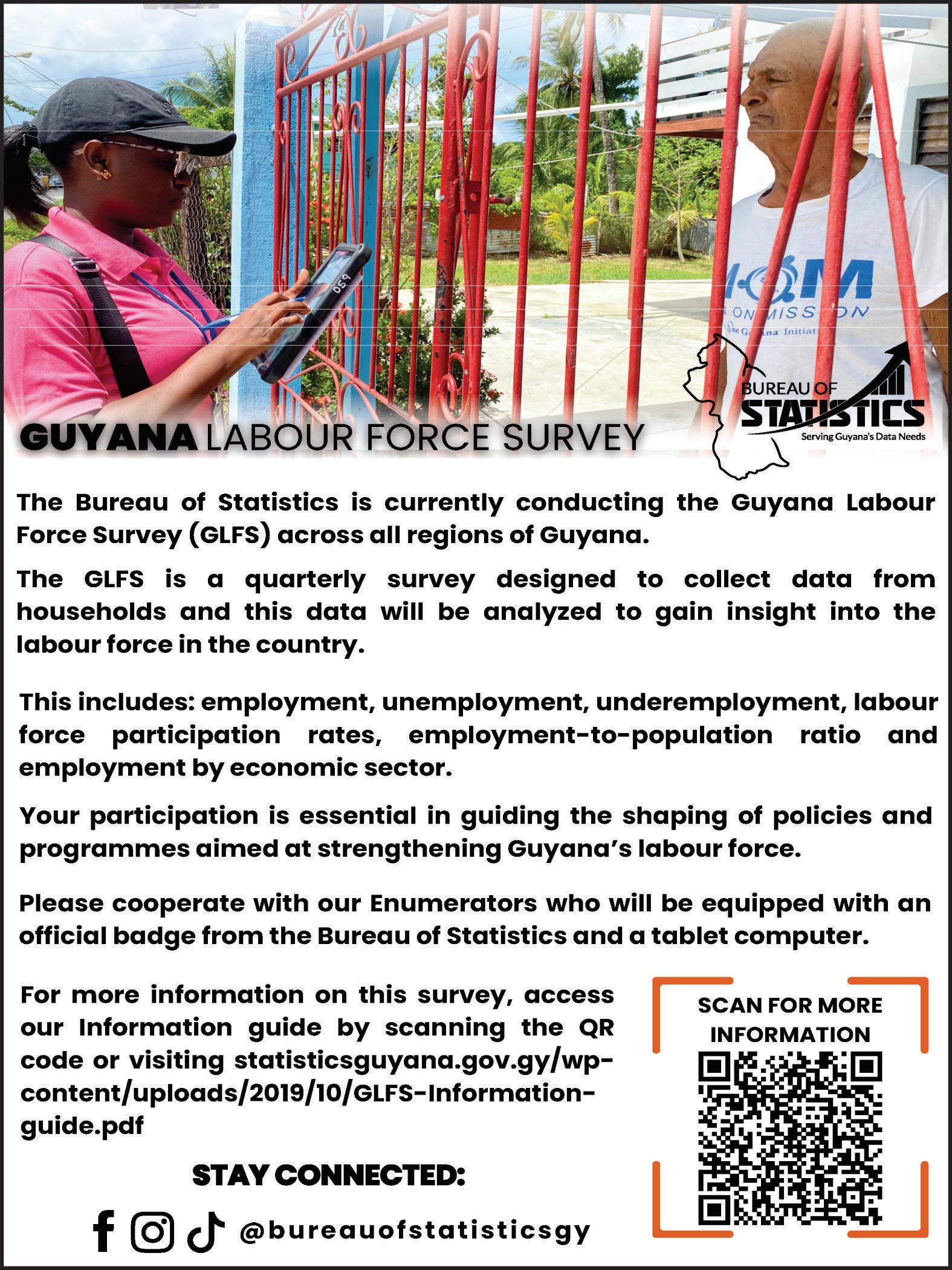

paced existence that felt alien to her.
But that glittering world eventually crumbled.
A routine check-up had revealed the unthinkable — breast cancer.
“How did this happen?” she had asked herself, numb and disbelieving. Her husband initially stayed close and supportive, but as treatment began and her body changed, so did his attention.
The pain, the weight loss, the loss of her lustrous hair — each day became a test of endurance. At night she would dream of a dark figure in the shadows, beckoning. “No!” she would whisper through tears. “Go away! I will survive.”
But the emotional blow came when her husband, after a weekend in Paris, looked at her and said coldly, “You’re not the same. You’ve TURN TO PAGE XIV

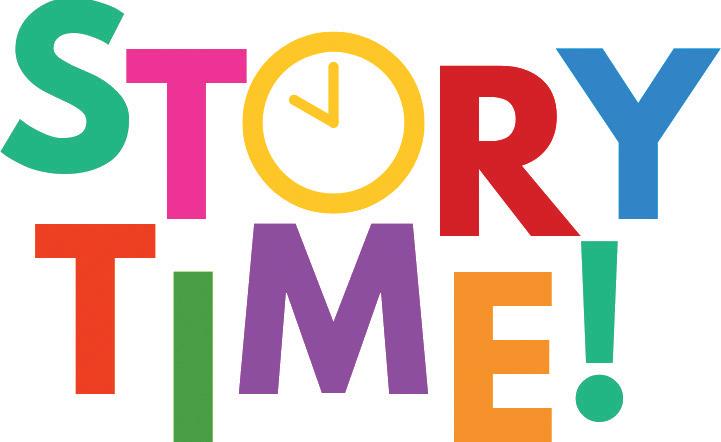
By Robert J. Fernandes
THE small aircraft came to a stop in a cloud of dust at the end of the interior airstrip. It looked like some strange insect from the surrounding forest and seemed awkward and out of place on the ground. I was standing under an open-sided shed along with a group of porknockers.
These men were partners, as their friendship had been forged in the crucible of danger and hard times, over many years. Laughing and joking with each other, they were in good spirits, eagerly anticipating their long-awaited trip to their gold claim near Potaro River head.
The plane door opened and a short, large woman dressed in an old Guyana Defence Force uniform, was having trouble breaking free of the doorway. The door of this small plane was only designed for loading and
unloading bags of sugar, rice and forty-five-gallon drums of fuel, so it couldn’t really handle Mavis. She appeared to be an enormous G.D.F. duffle bag with a head on it. She eventually sat on the floor of the plane and by passing the steps made, what was for her, a giant leap to the ground.
As the dust cleared, one of the porknockers called Rasta, recognised her and said to the leader of the group,
“Macaw, dat is not you sweet-oman Mavis? What she doing here?”
Macaw was a tall, lean man with a small head and I guessed that he got his name from the way he walked. He was badly parrot-toed and leaned forward when he walked, as if he didn’t want his tail to touch the ground. He should have been as surprised to see Mavis as they were, but he wasn’t. This caused the other porknock-
(From his published short story anthology ‘Short
ers to realise that something was up and they all turned towards Macaw for an explanation.
Yankee-Tom was the first to speak. “I hope yuh know she en going in no backdam wid we?”
“Who gun liff she up dem bumps in de trail?” asked another one of the group, called Granpa.
Coolie Ally mumbled to himself, “I shudda bring me chile mudda.”
Rasta said nothing and was still in shock as he stared disbelievingly at Mavis who was getting larger as she came towards them.
She waddled into the middle of the group, and as she turned to kiss her man Macaw, some part of her touched each one of them. The hairs on Macaw’s neck seemed to raise slightly, either because he was glad to see Mavis or in his anticipation of the battle with his partners that was about to

begin. In his most commanding tones he declared, “Somebody got fuh do de cooking wuk. Las time Granpa do um, he cook pure stupitness. Anyway Mavis gun cook and she gun get de same share as all awe.”
All hell broke loose. As I drifted away from the group, I could hear the shrill voice of Mavis, like a baboon’s call, high above the tangled voices of the others.
Sunday morning I was sitting on the bank of the Ireng River where I lived, trying to catch some fish. However the fish were all probably attending whatever holy services fish attend on Sundays and the only things biting were the atheistic Kaboura flies. As I watched the floating leaves go by on their journey to nowhere, the river seemed upset that the wind had disturbed the reflections on its surface so early in the morning.
In the distance the unmistakable, rhythmic tap-dance of paddles on the side of a corial, became slowly louder as three corials rounded the bend in the river and came towards me.
It was Macaw and his crew of porknockers from the airstrip yesterday. Two of the corials were loaded with men



I WAS brought up in a home that cannot boast of being rich, but one that addressed its needs within an environment of familiar customs—such as planting fruit trees and making Creole beverages, done out of habit despite the threat of fruit looters, mostly neighbourhood children.
As we grew up, the habit of eating fruit and greens was common. My family was spread around several areas in Georgetown and some on the coast. Adventures like “bush cook” had brought a later commonality with many young working-class youths exposed to this mainly rural activity.
But what else the bush cook embodied was that it was mainly a male thing—of course, there were always tough girls who defied any young male’s imagination of control, or who refused to sit next to them and play “big boy” uninvited
without delivering a well-landed punch. Thus, everything had its rules that demanded obedience or prolonged shame.
One of the things then was that one could buy or plead for a fruit and enjoy it willingly. Today, it’s different. Sometime last year or the year before, I bought a parcel of tangerines. I came home, missed lunch, and had a tangerine—an old habit—then took a bath. I was tired, but when I awoke, my wife and daughter told me that something was wrong.
My lips were swollen. They provided a tablet that was guaranteed to ease the swelling, and it did. They assured me that the fruit had been sprayed with chemicals to hasten its ripening. I have written articles on this subject over the years since this act was introduced here.
So, I decided to visit the sales-
people.
A young individual insisted that they also bought fruit from other farmers. I didn’t accept this because of what she had told me before, when I enquired about the fruit they had on display. She had then told me that they were producers, then reversed on my second complaint.
So, I decided to visit the Ministry of Agriculture. Unfortunately, I arrived around lunchtime. Some hours later, a relative working there came out to inquire. Realising that I was caught between lunch and probable meetings, I waited a few hours but reluctantly left.
I must again highlight a judge in India whose assessment of fruit ripening I found compatible with my own. Acting Chief Justice Dilip B. Bhosale and Justice S.V. Bhatt addressed the fruit traders who use carcinogen calcium carbide to ripen
fruits, calling them “worse than terrorists.”
Calcium carbide is a chemical compound whose two main products—acetylene, a colourless gas widely used as a fuel, and calcium cyanamide, used as a fertiliser in agriculture—are extremely harmful to the human body. This article can be found in The Times of India.
This situation requires thorough examination, as more severe damage to the body can occur. In a country where fruits rank high in snack and food choices, a greater emphasis should be placed on this.
In closing, I would like to refer to a troubling incident that occurred outside a client’s premises while I was visiting, where I met a minibus driver who also frequented the client. He looked withdrawn, so I greeted him.
He told me that he was selling his minibus—it was almost
new. I shrugged, almost implying “why?”—and he explained that his brother was a farmer who worked in the backdam of the district he was from.
His brother would bring fruits for his family. Now his wife was diagnosed with cancer. Selling the bus was one way of helping his household.
His brother confessed that he had followed the trend of spraying artificial fruit-ripeners on his fruit. This was not intentional. This has been a long-standing problem linked to economics. I recall an article by Leonard Gildarie, dated August 14, 2010, on page 16, where a supplier urged the blacklisting of farmers who use illegal chemicals. I have covered this topic several times, even developing a comic book for NARI—all in respect to institutional response.
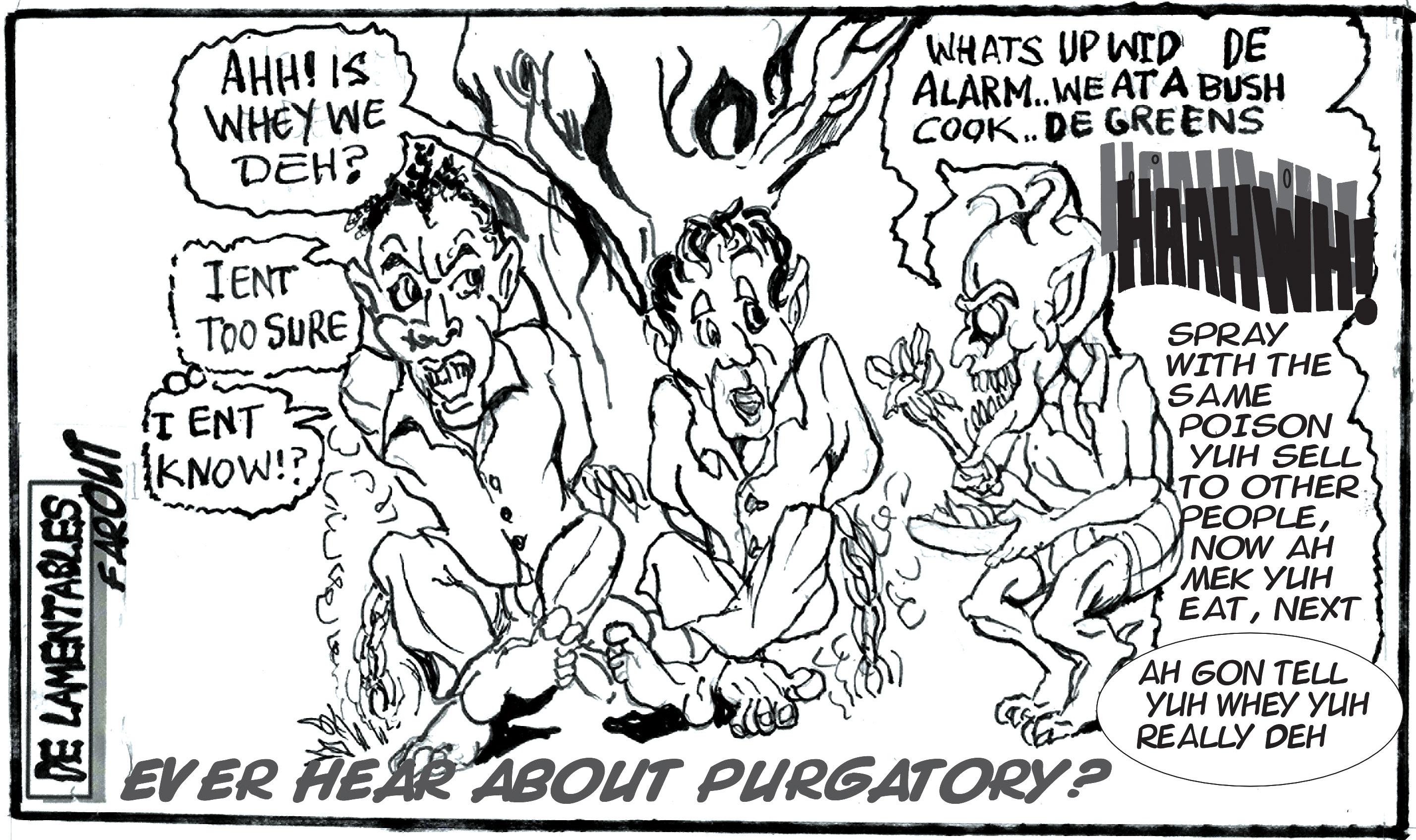

lost your beauty, your spark for life.”
Those words cut deeper than the disease ever could. Yet, she did not cry for long. “If you can’t love me when I’m fighting for my life,” she thought, “then you don’t deserve my tears.”
A fight for survival
Treatment was brutal, but slowly, she began to heal. The nightmares stopped, replaced by dreams of home — of her father milking cows, her mother’s laughter in the kitchen, the smell of freshly baked roti and woodsmoke.
Each dream rekindled her will to live. “There’s still something beautiful waiting for me,” she told herself. And three years later, the doctors confirmed what she had long prayed for — the cancer was gone.
“That was the day life handed me a single fresh rose,” she said softly. “And I looked up to heaven and
whispered, ‘Thank you, Lord.’”
Returning home
Her husband, by then, had found someone new and asked for a divorce. She didn’t resist. “I was free,” she said simply.
When she returned home, she found the old house dilapidated, the pasture overgrown. But instead of despair, she felt purpose. “I’ll bring it back,” she vowed.
She reconnected with relatives in Corentyne, sought advice, and began restoring the family land. The house was repaired, the fences mended, and the fields replanted.
With love and determination, she rebuilt everything herself. She donated to the local temple, helped struggling families, and supported animal shelters. “I grew up with cows,” she often joked. “Never had house pets.”
Though she had once
lived among the rich, she now found peace in simplicity. Her children checked in regularly, and even her ex-husband occasionally sent messages asking after her well-being.
“Well,” she would reply with a deep sigh, “I’m just fine.”
A new dawn
One morning, while preparing breakfast, a message arrived from her doctor in the UK, reminding her of her upcoming check-up. She paused, took a deep breath, and smiled. “Everything will be fine.”
Two weeks later, she packed her bags for the trip, already planning her return — the reopening of the pasture and Diwali preparations.
As the plane lifted from the runway, she gazed through the window and whispered, “I’m coming back home soon.”
To be continued.



MUCH has been written about what literary critic Frank Birbalsingh, in his book Passion & Exile: Essays in Caribbean Literature, called the “pornographic psycho-sexual” aspects of Edgar Mittelholzer’s novels. This thesis is readily supported with abundant examples from the Kaywana Trilogy, A Tale of Three Places, and, most notoriously, The Piling of Clouds—a novel whose protagonist is, in essence, a paedophile.
Despite the growing scholarship on this tragic West Indian writer (Mittelholzer committed suicide by self-immolation in 1965), there has been only cursory attention paid to his treatment of the natural world. Critics often mention, with careless brevity, some of the more heated scenes in the Kaywana Trilogy but rarely explore his portrayal of Guyana’s landscape or its profound impact on his characters.
Yet, the landscape in Mittelholzer’s novels is as vital as the characters themselves. In his 1951 novel, Shadows Move Among Them, the vivid depiction of nature intensifies the reading experience of this darkly humorous and poignant precursor to the hippie/utopian novel—a work unique within the West Indian literary tradition.
Set in 1937, the novel follows Reverend Harmston, an Englishman educated at Oxford, who relocates his family to Berkelhoost, a remote jungle settlement a hundred miles up the Berbice River in Guyana. There, he establishes a quasi-commune, assuming de facto

control over his household and the surrounding Amerindian reservation. He enforces discipline as he sees fit, advocates free love and magic over biblical doctrine, and even dispenses contraceptives.
His household includes two daughters—a precocious fourteen-year-old and a promiscuous seventeen-year-old—and two sons. Later, a cousin who is a recent widow suffering from apparent schizophrenia joins them. The jungle environment of Berkelhoost exerts a profound influence on all the characters.
The characters are entirely subject to the power
of their surroundings; their actions often appear as capitulations to the forces of nature. The torrential rains, relentless heat, animals, and swarms of gnats, bugs, blights, and bees dominate their daily existence.
This landscape encourages the imagination towards unorthodox behaviour. It is precisely this environmental influence that shapes the characters’ conduct. Removed from the civilised metropolis of Georgetown, they behave as creatures of the jungle. Shadows Move Among Them is set against a historical backdrop reminiscent of plantation slave society,
rich with the superstitions and mythologies of the local people. Berkelhoost is “a place where the slaves ran around and massacred their Dutch masters.”
Logan, an Amerindian “buck” (as referred in the novel) and notorious
mischief-maker, embodies the community’s belief in the supernatural—jumbies, Dutch ghosts, and malicious spirits. In this setting, the Reverend disciplines disobedient Amerindians by chaining them to trees at night or poisoning those
who remain stubborn, as part of his so-called “programme of discipline.”
As the Reverend himself acknowledges, “This environment, coupled with our religion, tends to stimulate our imaginations to TURN TO PAGE XXIII
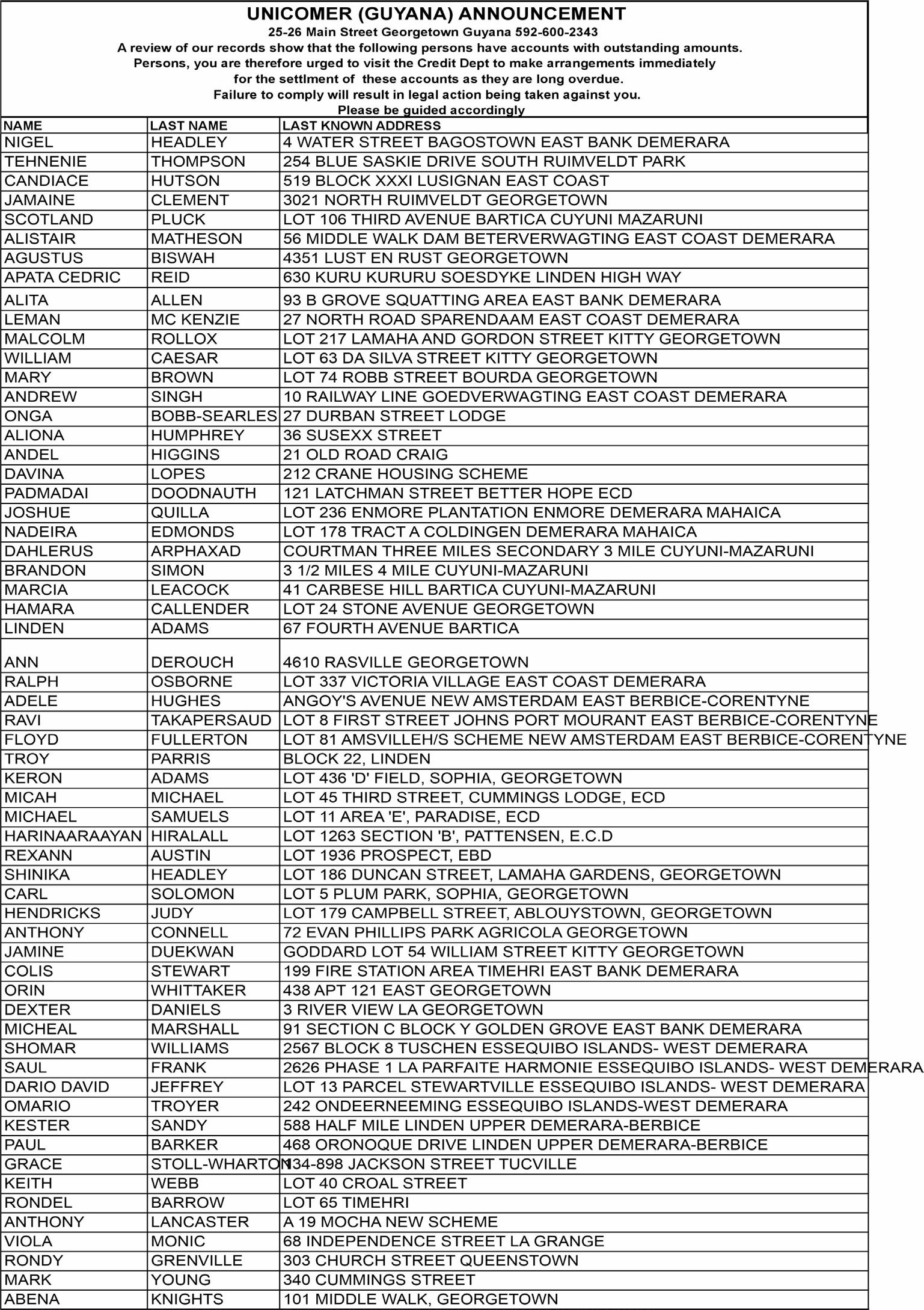
a celebration of Guyanese creativity. “Everything about this book is Guyanese,” he said. “The writer, editor, printer, and graphic designer — all from here. I wanted ownership not for myself alone, but for my children and my country. Self-publishing gave me that control.” The process wasn’t easy. Between family, work, and finances, the project demanded enormous sacrifice. “Funding was the hardest part,” he said. “I reached out to sponsors, but in the end, I financed it myself. I also wanted honest feedback, so I gave it to strangers, not just friends. Truth makes a better book.”
Impact and inspiration
The hard work paid off. Since its release, Tempest has received glowing reviews. “Every person who’s read it said it empowered them,” he said. “That’s the best reward.”
The book, available in both hard and soft copies, can be purchased directly through Orlanzo’s social media or by calling +592 658 0316. But beyond sales, Orlanzo’s greatest achievement is connection. “Readers tell me their stories — they open up about their struggles. That’s how I know Tempest is doing what I hoped: creating healing and conversation.”
Looking ahead
Already, Orlanzo is work-
FROM PAGE II
ing on his second book — one he believes may be his best yet. “It’s different,” he said. “More focused on morality and human psychology. I’m still deciding on the title, but it’s deeper, more philosophical. People need truth — that’s what I’m exploring.”
Whether memoir, philosophy, or fiction, Orlanzo’s voice represents a new wave of Guyanese writers carving their own path outside traditional publishing. “I believe in excellence,” he said simply. “If I’m going to do something, I’ll do it right.”
With Tempest, he has already proven that even the fiercest storms can become stories of strength.
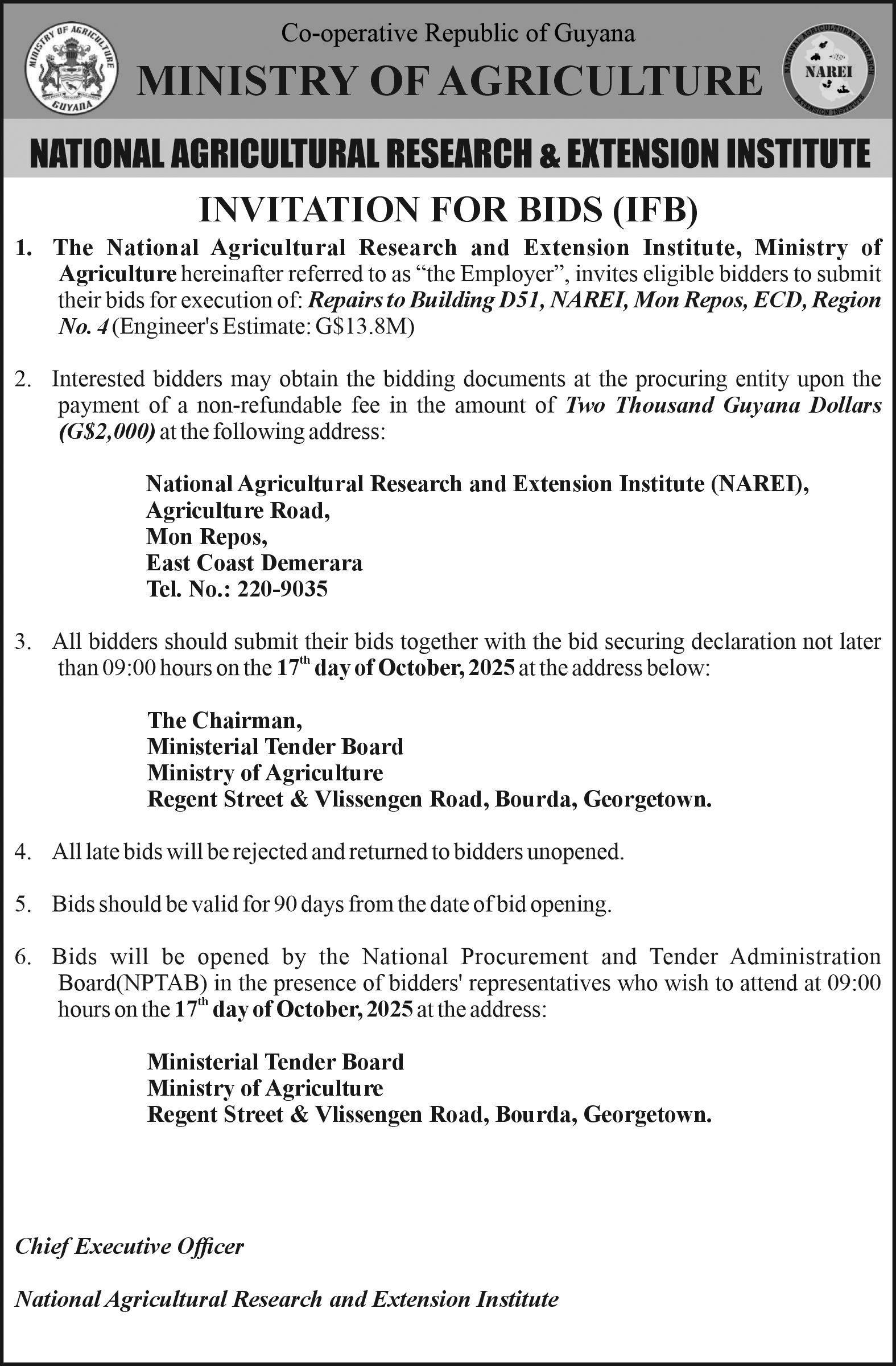

accuracy. While you may want to depend on a person’s institutional memory, they may not recall everything in sequential order. Therefore, you must invest in technology and upgrade as the need arises.
Effective communication between internal and external stakeholders is essential for all businesses, regardless of their size. The devices for communication will differ from organisation to organisation, but you must equip yourself with the tools that will help yours to grow.
Organisations can save on costs by reducing the number of printed documents where practicable. Sometimes, excessive waste is generated due to unnecessary printing. With the help of technology, there may also be a reduced need for many face-to-face visits, as meetings can now be held quickly and simply.
Despite the amount of planning senior staff of an organisation engage in, if the plan is not executed, the organisation will fail. Operations are like a plane on a runway preparing to lift off and then taking flight. If the organisation spends all its time planning, that means the plane is still on the runway.
For there to be a smooth flow of operations, coordination is key. Sometimes, everyone has a clear idea of what they are required to do, but there is no coordination, so everyone does what they think is right, only to find that there is much confusion within the organisation.
If an organisation has a product or service it wants the public to purchase, then it must be able to market it effectively. No one will automatically know that your organisation has something to offer that can be life-changing if it is not marketed.
Organisations sometimes fail in this essential area. If you do not promote your products or services, you will not be able to generate revenue to sustain the organisation. Effective marketing can attract customers from around the world, helping to grow your business.
If an organisation continues to produce its products or services with outdated tools, machinery, and equipment, then the overall cost of the item may not be competitive. There are times when an organisation must make changes to its operations and utilise options such as business process re-engineering and continuous improvement. These two options will lead to operational efficiency,
helping the organisation to become sustainable and possibly a leader in its industry. Feedback from customers must never be ignored. In fact, an organisation should constantly seek feedback about its products, services, and employees. When customers provide feedback, it must be analysed and quick action taken where appropriate. Some organisations fail to encourage customer feedback and have paid the price for not knowing where they were going wrong.
Customers often observe things that employees may overlook and can quickly point to areas of failure— and, where possible, offer solutions. Some customers even go the extra mile to inform you about what competitors are doing and how you can stay competitive. Customers like to know that they have a voice in how things operate within your organisation. It is essential to manage customer feedback, as you cannot address every concern.
For more information:
* Website: www.reidnlearn.com
* Amazon: www.amazon. com/author/gearyreid
* Email: info@reidnlearn.com
* Mobile: +592 645 2240
* Facebook: Reid n Learn
well in both breeding and meat production.
Commitment to quality breeding and farmer support
Baichoo takes great pride in being an excellent breeder and is dedicated to helping “one farmer at a time” improve their operations.
While breeding is his primary focus, he also sells a portion of his animals for meat, contributing to food security and the development of Guyana’s livestock industry.
He maintains detailed records of all births on his farm and registers each animal with GLDA to ensure proper traceability and data management—an essential practice for modern livestock farming.
His disciplined approach and openness to adopting new technologies have earned him the respect of fellow farmers and livestock officers alike.
Partnership with GLDA and family’s support
Baichoo is deeply grateful for the ongoing support provided by GLDA’s extension team, notably Ms Carmelita Fleming, Livestock Officer for the region, and Dr Dilchand, a GLDA veterinarian. “Ms Fleming has been instrumental in the development of my flock—she’s always just a call away,” he said. “The entire GLDA team’s commitment to farmers like me is something I truly value.”
He regularly participates in training and ca -
FROM PAGE VI
pacity-building sessions organised by GLDA to stay updated on new farming techniques, animal health management, and sustainable practices.
At home, farming is very much a family affair. His wife and two children are actively involved in daily farm activities, especially during lambing and kidding seasons. When new animals are born, his wife lovingly prepares nutritious porridge made from Quaker oats, cow’s milk, and local spices, which they feed to the newborns through baby bottles. “We treat them like part of the family,” he said warmly.
Today, Ramdath Baichoo stands as a shining example of resilience, innovation, and dedication. His transition from law enforcement to livestock farming reflects not only personal reinvention but also the transformative potential of Guyana’s small ruminant industry.
Through government-led genetic improvement programmes, climate-smart innovations, and strong technical partnerships between farmers and the GLDA, the sector continues to strengthen rural livelihoods, ensure food security, and promote sustainable agricultural growth.
For Baichoo, every new birth in his flock represents more than just an addition to his herd—it is a symbol of renewal, endurance, and the bright future of Guyana’s livestock industry.


that he was under pressure. Amerindians have an instinctive rhythm when paddling. To them it is usually an effortless exercise that can be kept up all day. Mavis
however, had Sebastian completely out of tune. It was not so much her weight, though it would have helped to have cut her into quarters like the tapir he had shot last week,
and distributed her more evenly in the boat. The real problem with Mavis was that she had absolutely no sense of balance whatsoever and Sebastian had to use all his
skill just to keep the corial from overturning.
As one of the boats passed near the bank where I sat, I called out, “Yankee-Tom, you all running

late. Sun high already and you ain’t even reach first falls yet. What happen?”
“Wa happun,” growled Yankee-Tom, cutting his eye on the boat with Mavis which was now lagging behind, “It still happunin.” He then gave the loudest “suck teeth” that I have ever heard. It not only echoed across the river, but he dislodged his “false teeth” in the process and he had to struggle to keep them from falling overboard.
As the corials slowly disappeared from view, I knew that the “Mavis Affair” was far from over and I had an urge to accompany the porknockers to the backdam so as not to miss the ending of the saga that would surely play out there.
Late one afternoon about two weeks later, my wait was over. I was tending my kitchen garden and listening to the gentle clicking of the Ite Palm leaves as they reported on the state of the wind in the Cipo valley, when the dark speck of a man floated down the grass-covered mountainside, and came slowly towards me. It was Rasta, or more accurately, what was left of him. Although I was accustomed to seeing porknockers after they had been walking for weeks on the trail, even so Rasta was in bad shape and looked somehow strange.
His fancy Brazilian jersey resembled a spider web designed to catch insects, which seemed to have caught a large animal instead. His black serge pants, once worn to church on the coastland, was not cut short in the usual way, but just seemed to have melted away above the knee. Instead of a belt around his waist he had tied a strip of frayed hammock, to keep his pants up. But it was the wild expression on his face that intrigued me most.
“What happen to you Rasta?” I asked in eager anticipation.
Like a mountain stream after a heavy downpour, the drama burst from the angry, broken man. “Is not wa happun to me, is wa happun to all awe. Is dat balopshous Mavis, she like Manatee, she
clumsy pun lan. Wa she en bruk she bun.”
I sneaked a closer look at his clothes and noticed for the first time definite evidence of singeing.
“We camp was bout fifteen minit from where we does wuk, and one day we leff Mavis fuh cook we food and we gone fuh wuk. Nex ting we see is Mavis come running and tumble down pun she face inside de pit where we diggin. Over five minit she cant talk and all awe stan up round she waitin. I tought she was gun dead,” Rasta stamped his feet to chase the flies, and it was only then that I noticed that he had no shoes and most of his toes were worn and bleeding.
“At lass she tell we dat de camp ketch-a-fiya an she cant out um. Accouri couldn’t a ketch we. I feel like me foot en touch de ground till me see de fiya. It tek over de hole camp, but I fly strait fuh me hammock and warishi. De warishi dun bun up and fiya pun de hammock, but I scramble um and run back outside.”
As he related the experience, he became so worked up that he was panting. “De fiya from me hammock ketch me clothes and nearly bun me up. Ah loss everything.”
I enquired about what had happened to the others.
“Dem scatta like wile hog in de bush, me en know where dey deh. Me en mine me tings bun up so much, but wa make me wan kill Mavis, is when me locks bun off.”
Suddenly I realised why it was that Rasta now looked so strange. His rasta dread-locks that had taken him years to grow and had been his pride and joy for so long, had been completely burnt off. On closer inspection his hair now resembled a clump of razor-grass after a savannah fire. It was just ashes clinging to roots. I looked into the eyes of the hairless Rasta and finally understood the wish to murder Mavis that I saw burning brightly there.
(Published by Hansib Publications)

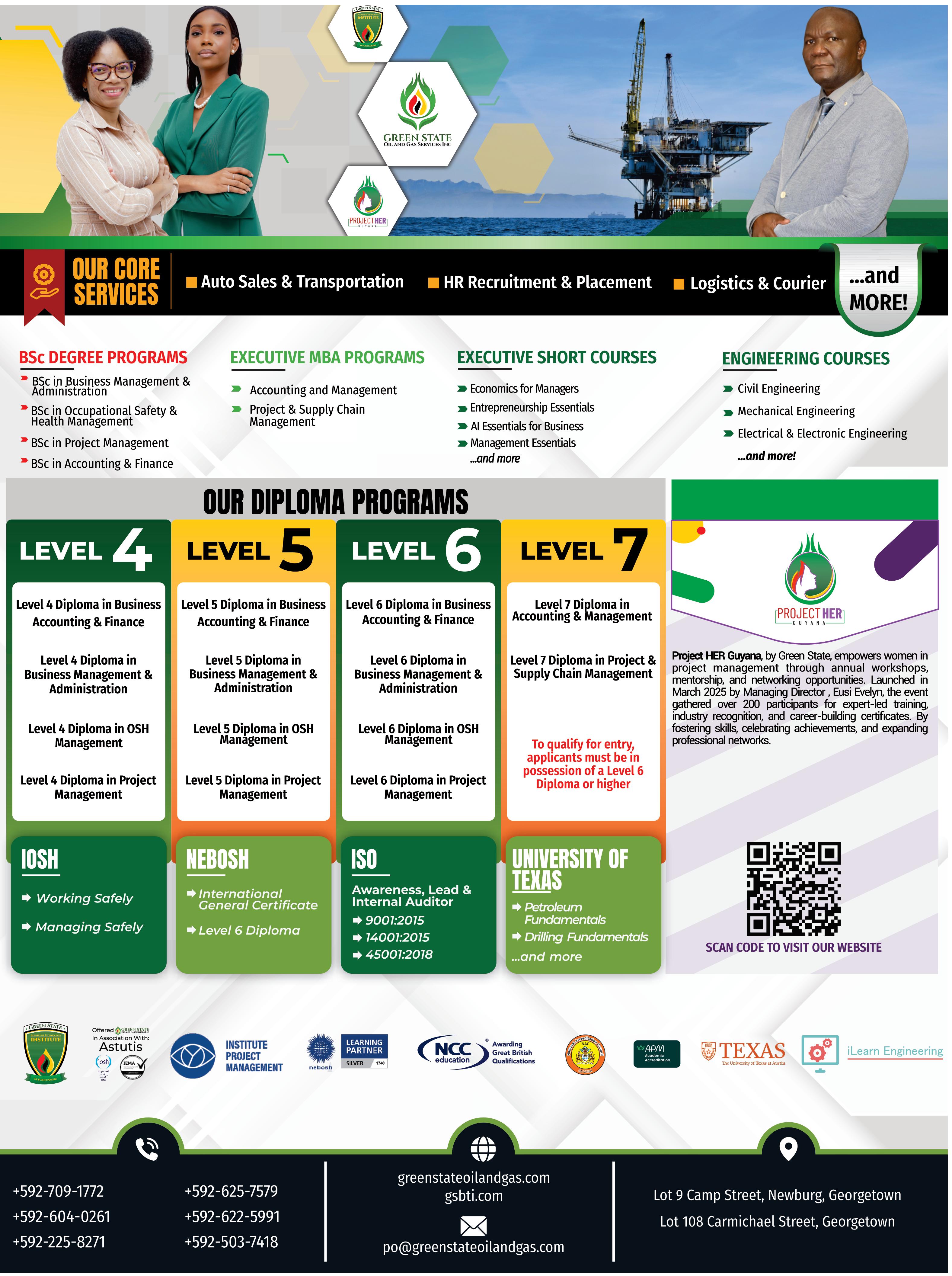



unorthodox behaviour.” Religion is honoured more in the breach than in observance; simple rituals such as saying grace at meals have fallen by the wayside. The Reverend does not hesitate to announce from the pulpit the arrival of a new batch of prophylactics. It is the environment that holds true sway.
The creed of the church he created embraces “Jesus among men, the King of Dreamers, creator of many lovely parables,” believes in “the Bible but only as a book of lovely legends,” and values “hard work, frank love, and wholesome play always spiced with make-believe, in the basic Christian way of living” (pp. 138–139).
Freed from metropolitan orthodoxy, the characters indulge their fantasies. The overwhelming cause of their behaviour is the influence of their environment. Nature, more than nurture, shapes the inhabitants of Berkelhoost.
Mittelholzer is explicit about this. In Shadows Move Among Them, nature symbolises the primal needs of the flesh—a recurring motif throughout the novel. “In Berkelhoost the Flesh is powerful, and the devil lurks in the shadow of every twig” (p. 119).
This is how nature affected the Reverend, according to his young daughter Olivia:
“Years and years ago— before I was born—Daddy had a dream about a pretty Buck girl on the Reservation, and nine months later Osbert was born. Mother nearly left him; it upset her so much, but he managed to persuade her that he was blameless; it was
FROM PAGE XV
the local influences that had caught him napping” (pp. 119–120).
These “local influences”—myth, dreams, make-believe, ghosts, and spirits—are inherent in Berkelhoost and serve as justification for every human action.
Nature here is not so much personified as allegorical: the landscape represents ideas and ideals, freedom perhaps foremost among them. Yet the jungle is also curative, sometimes menacing, reflecting various facets of the characters themselves.
For Gregory, the young widowed English cousin of the Harmstons, the jungle is a panacea for his psychological ailments—the “trembling in his body” and the “anxiety that closed in around him.”
Less than two weeks after his arrival, he exclaims with giddy confidence: “I feel full of activity and laughter… I think it’s this environment. It seems to send something tickling in me” (p. 132).
For Reverend Harmston, the jungle is the means by which he hopes to realise his utopian vision—a self-contained society on the river. The isolation of Berkelhoost, accessible only by river, lends itself to this experiment.
The characters within this domain are acted upon, even “attacked,” by the jungle. Reverend Harmston refers to the environment as “psychic phenomena which tend to stimulate our imagination to unorthodox behaviour,” a place teeming with “passionate, cruel spirits.”



AS a child, I often heard my grandparents reference how, decades ago, many communities were kept clean by community members and villagers. They always emphasised that the people were seldom wealthy but always took pride in property ownership. They took good care of their belongings and the environment around them.
As I listen to their remarks about the past, I ponder our present dilemma of constant public littering and poor waste management
across Guyana’s capital city, towns, and villages. Where did we go wrong? What happened between these time periods that vastly changed our society’s view on cleanliness and environmental protection?
I often see people post pictures and videos of certain venues after a public gathering. While I do applaud the efforts of certain organisers to clean the venues after the events, the question still remains: why do people litter in the first place? I can recall from my childhood that gar-
bage sites filled the edges of my town.
The irony surrounding these sites was that there was always a clear “No Dumping of Garbage” sign at almost every one of them. Yet, people still dumped their garbage there—why? Fortunately, as the years pass, my town has become increasingly aware of waste management. However, this is not the case for many other towns and villages in Guyana.
It is common practice for some communities to

dispose of their garbage and waste in waterways, drainage systems, empty lots, and abandoned sites. Little children might grow up seeing their parents practise these methods of waste disposal and then try to imitate them. This behavioural trait is what normalises littering in our communities. While it is our individual responsibility to ensure our environment is clean, it is also the responsibility of the authorities to ensure there are measures in place to match our individual ef- forts. Community members might be willing to dispose of their garbage correctly, but are there enough bins to do so? Are the bins in public spaces and at events emptied regularly? What about law enforcement? Are the penalties for littering enforced daily, and if so, how strictly is this enforcement carried out? I think you must know the answers to these rhetorical questions by now. As such, it is important that there is consistency in waste management at all levels in Guyana.

remind everyone that our actions today have significant implications for the overall health of our climate.
I also urge everyone to initiate educational talks and discussions in public spaces about the importance of maintaining a clean and safe environment.
We can start by continuously educating our young ones in schools while also practically enforcing good waste management practices in their learning environments. This is a serious habit that needs serious addressing because it affects our beaches, the quality of our air and water, and our biodiversity.
When a piece of trash, especially plastic, is disposed of incorrectly—it often ends up in our local drainage systems, which ultimately lead to the ocean. This is unfair to the animals and plants around us because human beings often have an innate selfish tendency to think that we alone inhabit this planet. I would like to
It might be embedded into some aspects of Guyanese culture to litter and “throw away” garbage anytime, anywhere. However, that needs to change. We can take patterns from the Japanese. Most people in Japan have developed a habit of taking their garbage in their bags with them until they’re home. In Singapore, as well, there are very large fines for littering that are often enforced, which deter people from doing it.
I would say that littering is not necessarily a cultural trait or phenomenon in Guyana. However, it is the result of many underlying factors such as poor enforcement of laws, inadequate infrastructure, and little to no education on breaking away from such a habit.
To combat this, a shift in public attitude and perception is required. Many countries across the world are faced with the same dilemma. However, in those that have improved, results show that it requires a collective effort and commitment between authorities and citizens. It should be portrayed as a shared national vision and value— where we all collectively commit towards a cleaner Guyana for ourselves and future generations to come.
harmony—half ceremony, half celebration.
People swayed where they sat, some nodding to the music, others simply watching the soft ripple of the river against the hull. It wasn’t just a bridge opening anymore. It was a shared memory in the making—a moment anchored not only in steel and concrete, but in music, community, and the easy joy of being together on the water.
The wait on the water stretched longer than anyone expected. Yet there was something almost cinematic about it—the river holding its breath as the night deepened and anticipation grew. Then, at last, the soft chug of engines stirred the stillness. One by one, our vessels began to move, their lights gliding across the dark surface like quiet constellations.
Our captain, with the calm precision of someone who knew these waters by heart, guided us toward the gleaming silhouette of the Bharrat Jagdeo Demerara River Bridge. It was a delicate dance—an expert navigation through the maze of massive buoys that keep the old bridge afloat.
That old structure, once hailed as the fourth largest floating bridge, rose before us—a familiar landmark seen through entirely new eyes. I had crossed it countless times in the seat of a car, glancing at the water below without a second thought. But this… this was different.
As we slipped beneath the steel spans, the soundscape shifted—the low hum of engines blending with the muted rumble of traffic moving overhead. Lights from passing vehicles flickered against the water, casting a shimmering lattice of reflections around us. In that moment, awe washed over me. The bridge I’d known all my life stood not just as a roadway, but as an architectural marvel, a living artery that had carried generations across the river.
Above, history was being made. Below, we floated in its shadow—quiet witnesses to a moment we would never forget.
Then, without warning, the night split open in a burst of light. Fireworks exploded high above the newly opened Bharrat Jagdeo Demerara River Bridge, painting the sky in shimmering golds, reds, and greens. The river
mirrored it all—a restless canvas of colour—each ripple catching the light and sending it spinning outward. For a heartbeat, the water and the sky seemed to blur into one dazzling spectacle.
Almost instinctively, every vessel joined the celebration. Horns blared across the river in a chorus of sound, each note rising to meet the fireworks in a grand symphony. Passengers cheered, some raising their phones, others simply tilting their faces skyward, soaking in the light. It was joy that didn’t need words—just the collective understanding that we were part of something historic.
And then, as quickly as it began, the sky quieted. A faint haze of smoke drifted like silk above the bridge. The water, moments earlier alive with reflected fire, returned to its dark calm. In that hush, a quiet reverence settled over the boats.
People spoke softly, or not at all, their faces lit by the fading glow of the bridge lights. Beneath the surface of the celebration, everyone seemed to feel the same thing : this was a turning point.
The return journey began under a shifting sky. The river, no longer still, grew restless with the night. Waves slapped sharply against the sides of the boat, sending cold spray into the night air.
It wasn’t violent, but insistent—almost as if the Demerara River itself was stirred by the weight of the moment. The laughter quieted to murmurs, passengers braced against the rhythm of the swells, and the lights of Georgetown slowly grew closer.
As the celebrations faded into the night, guests disembarked with a shared sense of pride, their laughter mingling with the lap of the Demerara River. This was more than a trip upriver for the bridge opening—it was a once-in-a-lifetime opportunity for connection, community, and the spirit of a nation moving forward together.
We were fortunate to have witnessed history from the river itself—a front-row seat to a national milestone. For our local operator, Trail Masters Adventure Tours, the evening marked more than just an unforgettable experience; it was a defining chapter in the company’s
story. Hosting the largest river tour in its history, Trail Masters successfully operated a fleet of 13 vessels and welcomed more than 230 guests on board. This remarkable achievement was
made possible through close collaboration with Exclusive Adventures and the invaluable support of the Ministry of Tourism, Industry and Commerce, the Guyana Tourism Authority, and the Tourism and Hospitality Association of Guyana.
Special recognition was also extended to the Maritime Administration Department for ensuring safe and seamless operations on the water. It was, in every sense, a shared moment of pride—one that brought together community, industry, and the enduring spirit of a nation on the move.
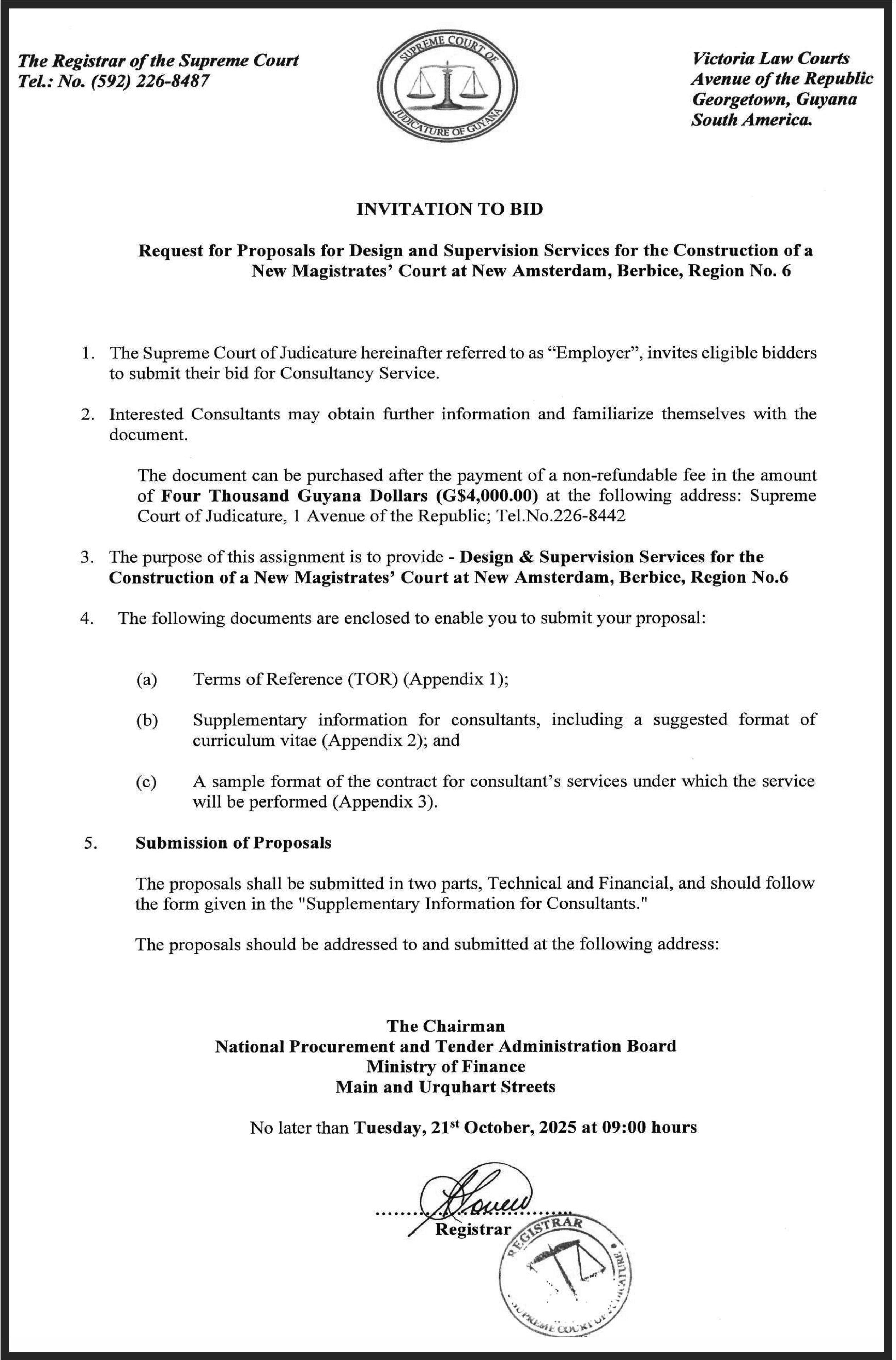









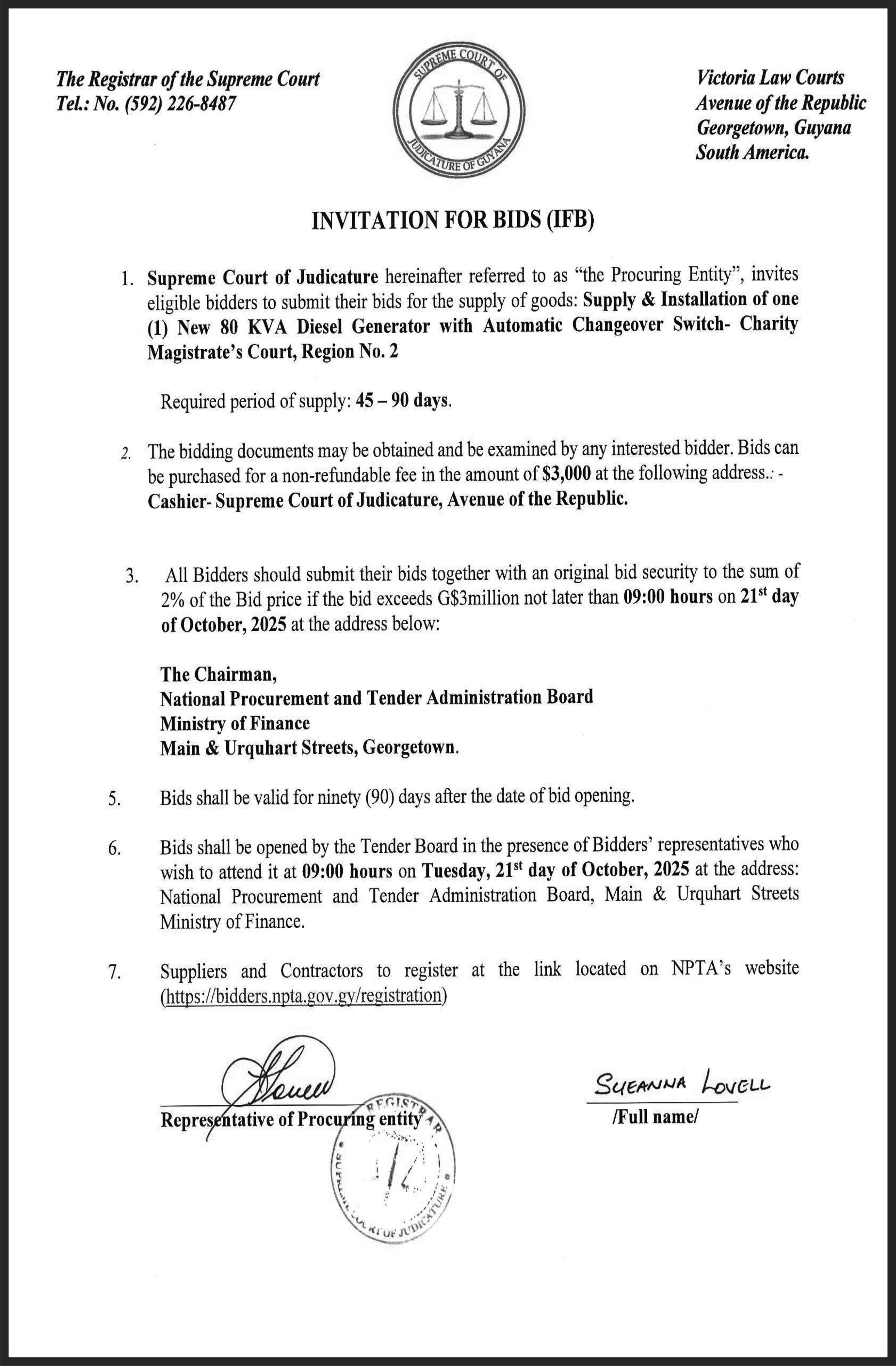


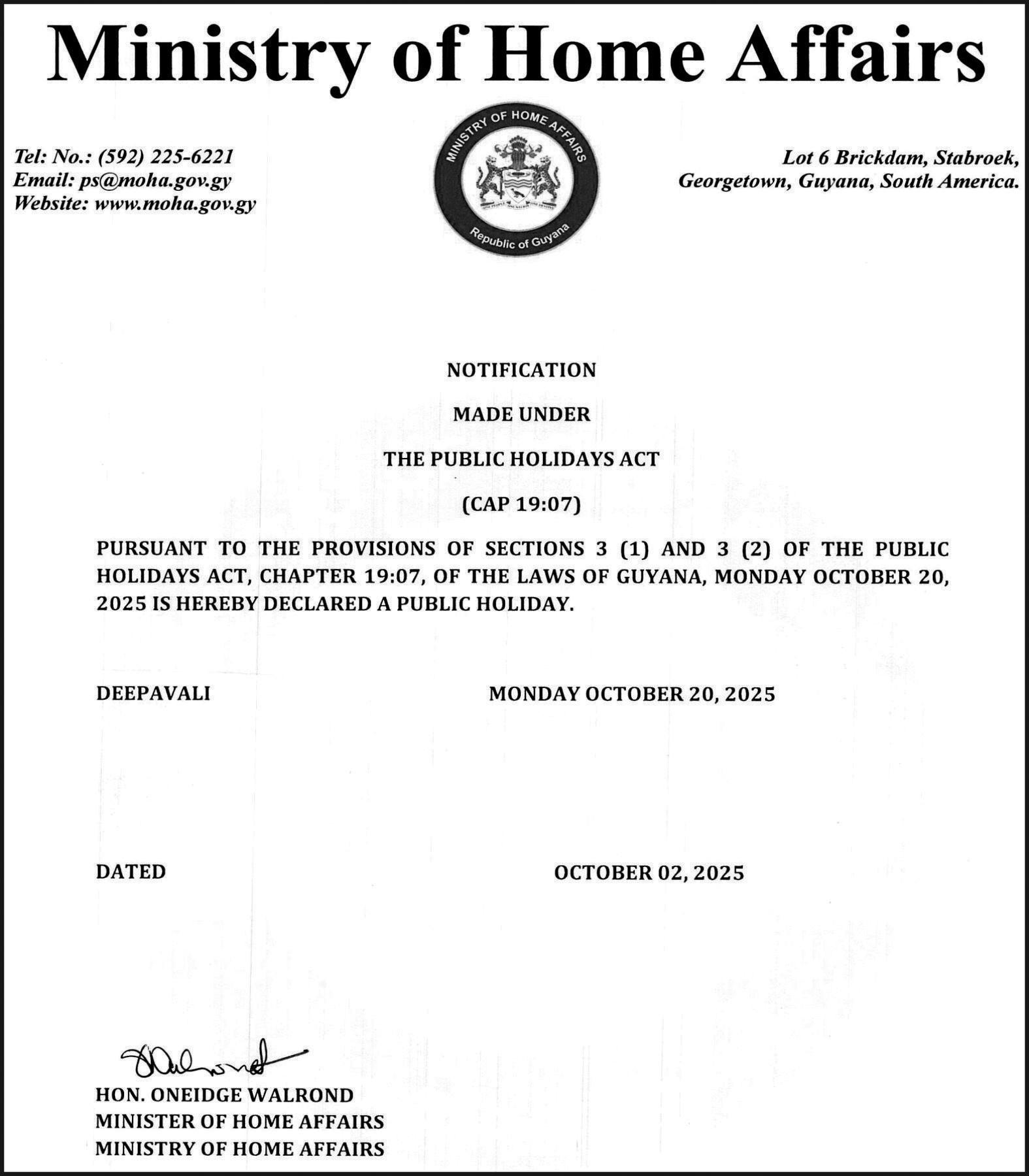




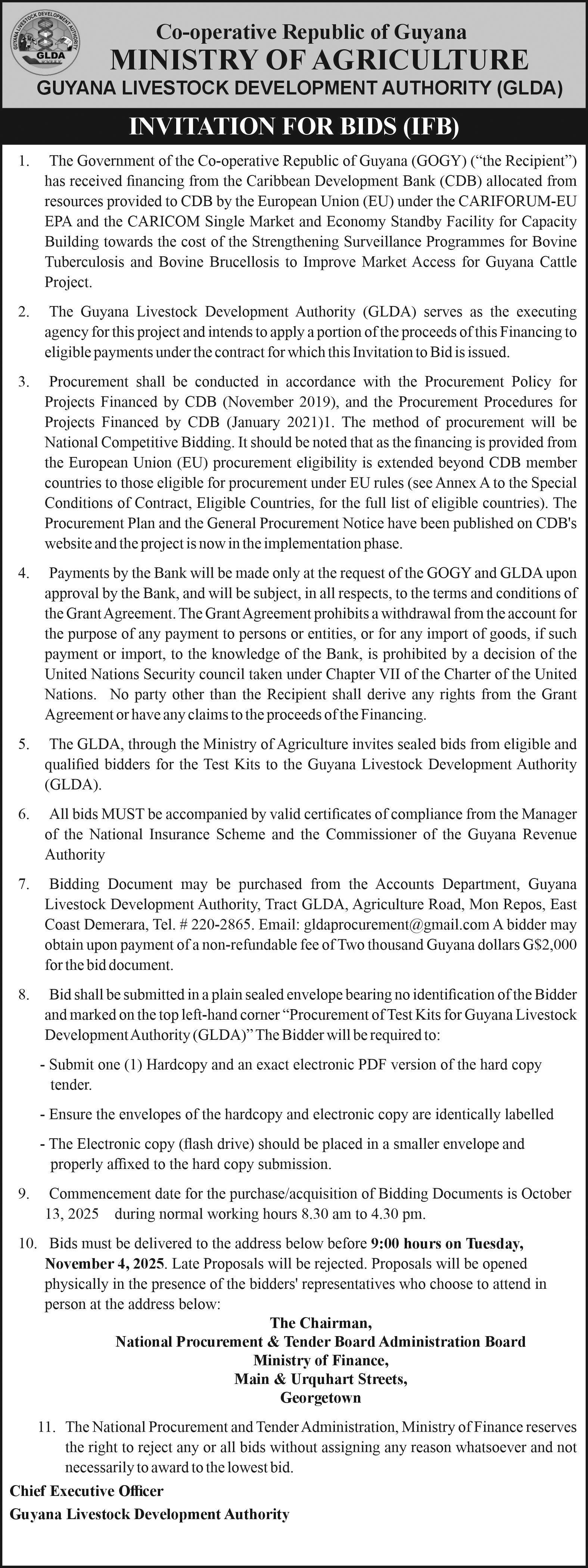

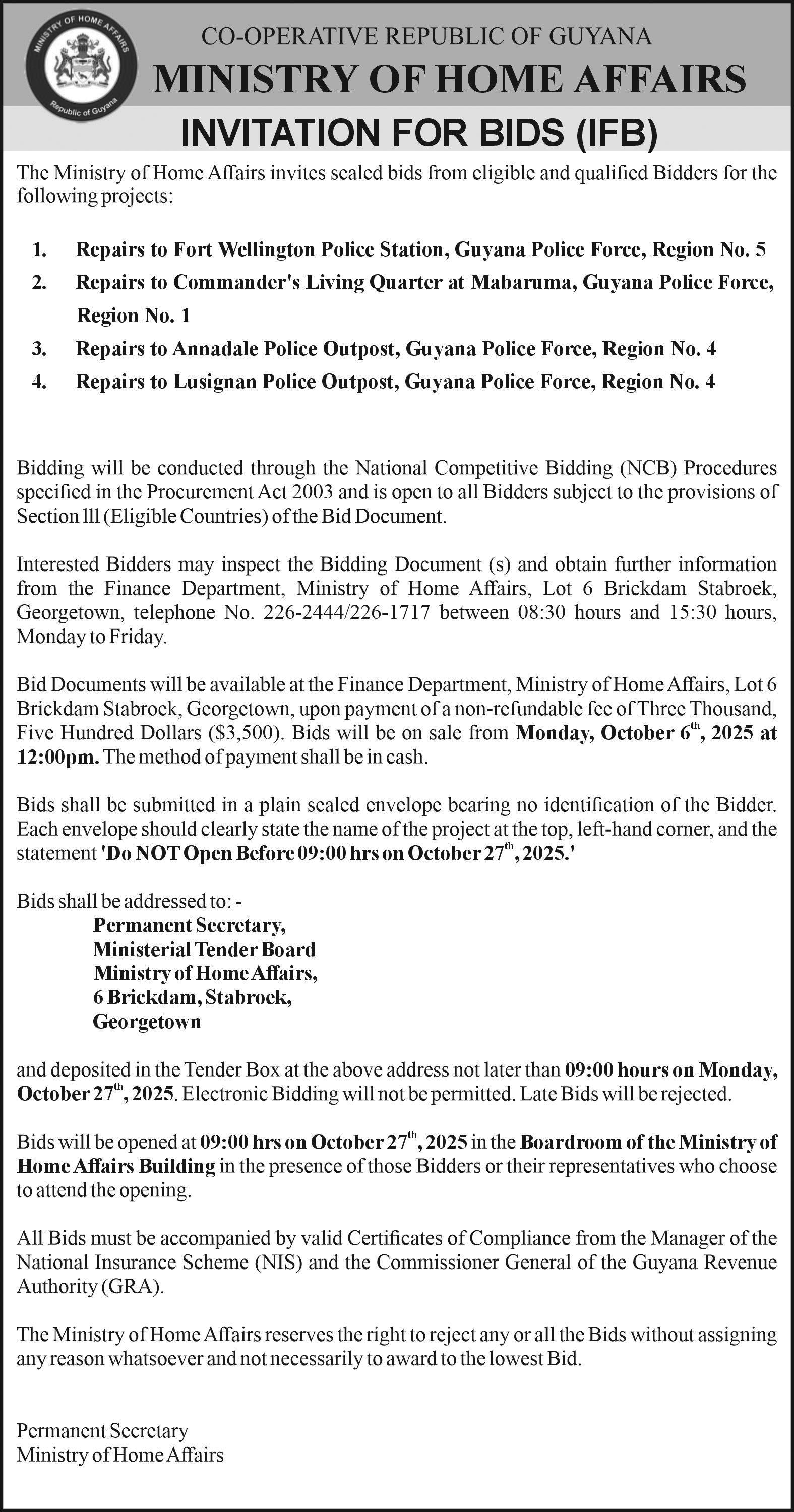












Welcome, dear reading friend. There comes a time in study when you are suddenly shocked by your poor understanding of certain concepts. This is a disturbing reality, but the ever-helpful discussion technique used within study groups can readily rescue you. Work closely with your class teachers and other knowledgeable
October 12, 2025
individuals who are familiar with your examination syllabus. Know that study success is derived from purpose, application, and workable learning styles. Avoid stress and anxiety; let study adjustments help you. Be smart. Love you.

Working with words
Note: A word in English is the smallest meaningful unit of language, which can be a single letter (like “a” or “I”) or a combination of syllables, and has a defined meaning or concept.
Usage in English or how words are actually used in context can sometimes alter or specify their primary meaning. To understand a word, you need to learn how to define it and use it appropriately in different situations to form clear and meaningful forms of communication.
There are other things that you should know about a word.
A. To find a word’s meaning, you need to:
1) use a dictionary; 2) recognise contextual clues by paying attention to surrounding words and sentences; and 3) learn about lexemes to understand the different forms of a word (e.g., “open,” “opened”).
B. To understand word usage, you need to:
1) observe how native speakers use words in different scenarios; 2) observe how words are combined to form phrases, clauses, and complete sentences with proper word order; and 3) practise, practise, practise while conversing and writing, and build your self-confidence.
C. To expand your vocabulary, you need to:
1) play word games and have fun while learning about the word; 2) read books and articles to meet words regularly in various contexts; 3) study new words by listing them and their meanings and make a conscious effort to use them in your daily speech.
1. Let us work with the meaning of the word (i): Complete the following sentences by using the correct word form from these given items: occasional, pent-up, unnatural, poised, respective.
a) The boxers approached from their ….. corners.
b) An …..rest was all that he needed despite the slight
You should never have your best trousers on when you turn out to fight for freedom and truth.
steepness of the path.
c) She could not contain her ….. feelings any longer and gave a loud cheer.
d) The beast stood ….., ready to spring.
e) Using his left hand felt ….. until he got used to it.
2. Let us work with the difference between words: Tell the difference between each pair of words. This mastery helps make your compositions pop with enthusiastic communication.
a gash and a cut; a retort and an answer; a carcass and a body; a specimen and a sample; a squad and a crowd; a spectator and a watcher; clamber and climb; encounter and meet.
Note: Look closely at shades of difference. It is always good. Even words with similar meanings can give us trouble if we do not use them carefully. The following poem points out this dilemma. Read carefully and then discuss the shades of word difference with your study partners to further enhance your word choice in speech and writing. It is beautiful. Please read carefully.
Call a woman a kitten, but never a cat; You can call her a mouse, cannot call her a rat; Call her a chicken, but never a hen; Or you surely will not be her caller again.
You can call her a duck, cannot call her a goose; You can call her a deer, but never a moose; You can call her a lamb, but never a sheep; Economic she lives, but you cannot call her cheap.
You can say she’s a vision, can’t call her a sight; And no woman is skin-
ny; she’s slender and slight. If she should burn you up, say she sets you afire. And you’ll always be welcome, you tricky old liar. (John E. Donovan) 3. Working with the meaning of the word (ii) Which of the words that follow each of the following sentences is nearest in meaning to the word in capitals? 1). We PARTITIONED the organisation to give each worker some time to mull over the heinous incident.
(A) restored, (B) examined, (C) divided, (D) scattered 2). We developed a CALCULATING plan for expanding our share of the rice milling factory.
(A) secret, (B) reckless, (C) unusual, (D) deliberate 3). They RATTLED on for about a full half-hour without care for their audience.
(A) talked, (B) battled, (C) laughed, (D) sounded 4). I remained IMPASSIVE as the neighbour enumerated how ugly the incident was.
(A) distressed, (B) composed, (C) intense, (D) defiant
IMPROVING
READING: Concluding understanding of a text Conclusions: As we read, we progress with an important reading skill. We behave very much like detectives who dig deep to examine clues and find solutions within a mystery.
Our digging corresponds to how deeply authors imply their themes and ideas rather than stating them outright as the text plays on. We, good readers, conclude by connecting our own experiences with facts from stories.

WHAT constitutes good dental practice? Such qualitative questions about dentistry are often asked. But who decides whether a practitioner is performing well? Who lays down the guidelines? Who takes action to rectify an unacceptable level of dental care? These questions and many more are rightly asked within the profession among colleagues and, increasingly today, by the public—our patients.
What constitutes good dental care has been chiefly a prerogative of the dental profession.
However, concentrating on the technical aspects of need, such as levels of dental technology, precludes giving sufficient attention to the attitudes and behaviour of patients, and any assessment of need should include their perceptions.
Aspects of good dental care that would be identified and proposed by patients may
not necessarily be the same as those proposed by the dentist. Major differences in emphasis on the concept of quality have been identified between the perspectives expressed by the providers and users of health services.
Whilst professional emphasis is on technical skills and freedom in prescribing care, patients place emphasis on responsiveness and politeness from the dentist, along with relief from symptoms or improvement in oral function.
A survey was conducted to assess patients' evaluation of the criteria for good dental practice proposed by both patients and dentists. The criteria originated from patients were: the dentist’s skills, a caring dentist, sterilisation/ hygiene, understanding with children, explanation of procedures, a good appointment system, and the dentist's qualification.
The criteria originated by dentists were: pleasant décor

and surroundings, friendly staff, pain-free dentistry, cost, being seen in an emergency, up-to-date equipment, and good practice image.
A total of 344 patients were evaluated using 14 criteria for good dental practice. Questionnaires containing the seven pairs of criteria, randomly assigned by a computer, were prepared, with each pair comprising one patient and one dentist criterion. Patients were asked to indicate their preference. The number
of times each criterion was preferred was scored and ranked.
The three highest-ranked criteria were the explanation of procedures, sterilisation/ hygiene, and the dentist’s skills (all criteria proposed by patients), while the three lowest-ranked criteria were upto-date equipment, pleasant décor and surroundings, and a good practice image (all criteria proposed by dentists).
Many factors influence whether an individual is satis-
fied with the dental care they receive.
Among those identified have been the technical competence of the dentist, the characteristics of the practice, the cost of treatment, the attitude of the receptionist, and the practice’s cross-infection control procedures.
Additionally, levels of patient satisfaction have been shown to influence rates of use of medical services and levels of compliance with advice. If the dentist meets a
patient’s expectation of good dental practice, then they will be more satisfied.
Finally, I challenge the Consumer Associations to explore the option of systematic collection of consumer feedback, which would give dentists a clearer idea of what their patients want, and to encourage public discussion on this topic. In this way, we can all play a part in improving the practice of dentistry in Guyana.

